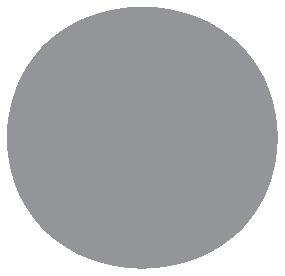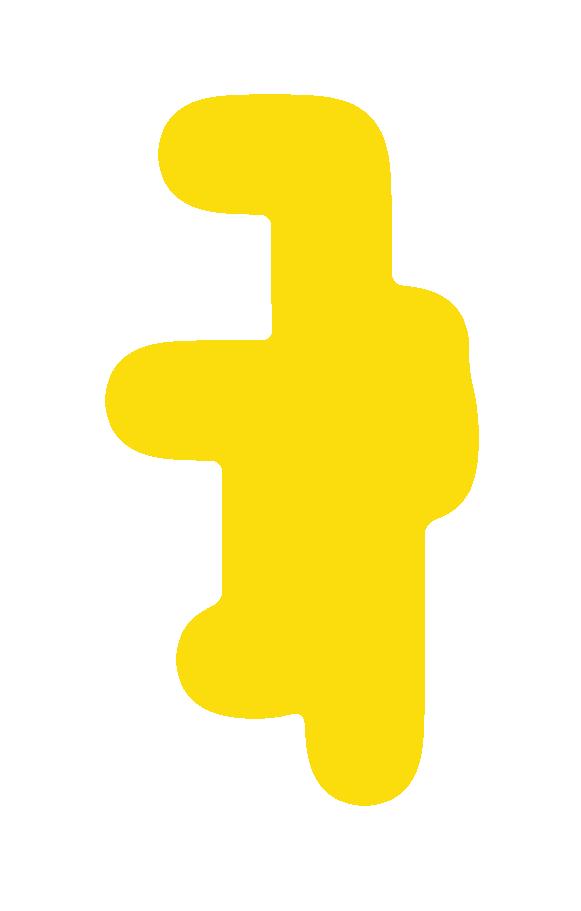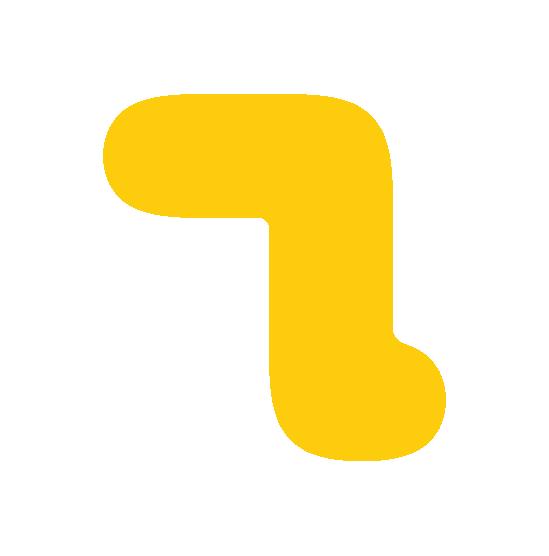















ION Orchard delivers a design that goes beyond the conventional, offering visitors an unparalleled shopping experience. Located in the heart of the city, the mall represents a significant expansion of Singapore’s public sphere, providing both internal and external spaces to be enjoyed by all.
Xypex was pleased to be selected as the specified concrete waterproofing solution for this major construction projects: the prestigious 61,300 m2 ION Orchard retail mall in Singapore’s prime retail district. The pre-requisites and demands of the construction schedule were high and delays and setbacks were to be avoided. Xypex was specified with a confidence based on a lengthy history of successful solutions on many large projects. Xypex Admix C-1000 NF was chosen not only because it was the most reliable solution for waterproofing and protecting the critical substructure – the basement and roof concrete slabs – but, because it is blended into the concrete mix at the time of batching, it offered considerable control benefits in the overall construction scheduling process.
For more information on how our solutions can provide sustainable benefits for your concrete assets, please visit our website at www.xypex.com.au or LinkedIn Page.


Number 04, APRIL 2019 IEM Registered on 1 May 1959
MAJLIS BAGI SESI 2018/2019 (IEM COUNCIL SESSION 2018/2019)
YANG DIPERTUA / PRESIDENT
Ir. David Lai Kong Phooi
TIMBALAN YANG DIPERTUA / DEPUTY PRESIDENT
Ir. Ong Ching Loon
NAIB YANG DIPERTUA / VICE PRESIDENTS
Ir. Prof. Dr Ruslan bin Hassan, Ir. Lai Sze Ching, Ir. Lee Boon Chong, Ir. Prof. Dr Norlida bt Buniyamin, Ir. Prof. Dr Jeffrey Chiang Choong Luin, Ir. Ellias Saidin, Ir. Gopal Narian Kutty
SETIAUSAHA KEHORMAT / HONORARY SECRETARY
Ir. Mohd Khir bin Muhammad
BENDAHARI KEHORMAT / HONORARY TREASURER
Ir. Dr Tan Chee Fai
BEKAS YANG DIPERTUA TERAKHIR / IMMEDIATE PAST PRESIDENT
Ir. Dr Tan Yean Chin
BEKAS YANG DIPERTUA / PAST PRESIDENTS
Y.Bhg. Academician Tan Sri Dato’ Ir. (Dr) Hj. Ahmad Zaidee bin Laidin, Y.Bhg Dato’ Ir. Dr Gue See Sew, Y.Bhg. Dato’ Paduka Ir. Prof. (Dr) Haji Keizrul bin Abdullah, Y.Bhg. Academician Dato’ Ir. Prof. Dr Chuah Hean Teik, Ir. Choo Kok Beng
WAKIL AWAM / CIVIL REPRESENTATIVE
Ir. Dr Lee Yun Fook
WAKIL MEKANIKAL / MECHANICAL REPRESENTATIVE
Ir. Fam Yew Hin
WAKIL ELEKTRIK / ELECTRICAL REPRESENTATIVE
Ir. Lim Kim Ten
WAKIL STRUKTUR / STRUCTURAL REPRESENTATIVE
Ir. Dr Ng Soon Ching
WAKIL KIMIA / CHEMICAL REPRESENTATIVE
Ir. Prof. Dr Lee Tin Sin
WAKIL LAIN-LAIN DISPLIN / REPRESENTATIVE TO OTHER DISCIPLINES
Ir. Roznan bin Abdul Rashid
WAKIL MULTIMEDIA DAN ICT / ICT AND MULTIMEDIA REPRESENTATIVE
Ir. Dr David Chuah Joon Huang
WAKIL JURUTERA WANITA / WOMAN ENGINEERS REPRESENTATIVE
Ir. Mah Siew Kien
AHLI MAJLIS / COUNCIL MEMBERS
Ir. Assoc. Prof. Dr Ahmad Kamil bin Arshad, Ir. Dr Tan Kuang Leong, Ir. Vincent Wong Khien Ngie, Y.Bhg. Lt. Jen. Dato’ Wira Ir. Ismail bin Samion (Ret. RMAF), Y. Bhg. Dato’ Ir. Hj. Anuar bin Yahya, Ir. Mah Way Sheng, Ir. Gunasagaran a/l Kristnan, Ir. Chen Harn Shean, Ir. Mohd Aman bin Hj. Idris, Ir. Wong Chee Fui, Ir. Prof. Dr Leong Wai Yie, Ir. Razmahwata Mohd Razalli, Ir. Abdul Razak Yakob, Ir. Yau Chau Fong, Y. Bhg. Dato’ Ir. Foong Choy Chye, Y. Bhg. Dato’ Ir. Kisai bin Rahmat, Y. Bhg. Dato’ Ir. Nor Hisham bin Mohd. Ghazali, Ir. Toh Chin Kok, Ir. Dr Jeyanthi Ramasamy, Ir. Dr Wang Hong Kok, Ir. Yam Teong Sian, Y. Bhg. Dato’ Ir. Hj. Fakharazi bin Hj. Wahijan, Ir. Yasotha Ramachandran Chetty, Ir. Mohmad Asari bin Daud, Ir. Dr Lai Khin Wee, Ir. Ng Beng Hooi
WAKIL BAHAGIAN JURUTERA SISWAZAH / YOUNG ENGINEERS SECTION REPRESENTATIVES
Yew Weng Kean, Addison Koh, Tony Ong, Kuugan Thangarajoo, Cheah Khai Chun PENGERUSI CAWANGAN / BRANCH CHAIRMAN
1. Pulau Pinang: Ir. Yau Ann Nian
2. Selatan: Ir. Teo Ki Yuee
3. Perak: Ir. Abdul Razak bin Ali
4. Kedah-Perlis: Ir. Haji Abdullah bin Othman
5. Negeri Sembilan: Ir. Dr Oh Seong Por
6. Kelantan: Ir. Abrizan bin Abdul Kadir
7. Terengganu: Ir. Atemin bin Sulong
8. Melaka: Ir. Sreedaran a/l Raman
9. Sarawak: Ir. Haidel Heli
10. Sabah: Ir. James Yong Hon Min
11. Miri: Ir. Prof. Dr Lau Hieng Ho
12. Pahang: Y. Bhg. Dato’ Ir. Sharuddin bin Mohd Simin AHLI JAWATANKUASA INFORMASI DAN PENERBITAN / STANDING COMMITTEE ON INFORMATION AND PUBLICATIONS 2018/2019
Pengerusi/Chairman: Ir. Prof. Dr Ruslan Hassan Naib Pengerusi/Vice Chairman: Ir. Dr Lee Yun Fook Setiausaha/Secretary: Ir. Lau Tai Onn
Ketua Pengarang/Chief Editor: Ir. Prof. Dr Ruslan Hassan Pengarang Buletin/Bulletin Editor: Ir. Abdul Razak Yakob Pengarang Prinsipal Jurnal/Principal Journal Editor: Ir. Dr David Chuah Joon Huang Pengerusi Perpustakaan/Library Chairman: Ir. C.M.M. Aboobucker
Ahli-Ahli/Committee Members: Ir. Ong Guan Hock, Ir. Yee Thien Seng, Ir. Chin Mee Poon, Ir. Dr Oh Seong Por, Ms. Michelle Lau Chui Chui, Ir. Prof. Dr Abdul Aziz bin Abdul Samad, Ir. Dr Wang Hong Kok, Ir. Razmahwata bin Mohd Razalli, Dato’ Ir. Nor Hisham Mohd Ghazali, Ir. Yasotha Ramachandran Chetty, Dr Sudharshan N. Raman
LEMBAGA PENGARANG/EDITORIAL BOARD 2018/2019
Ketua Pengarang/Chief Editor: Ir. Prof. Dr Ruslan Hassan Pengarang Buletin/Bulletin Editor: Ir. Abdul Razak Yakob Pengarang Jurnal/Journal Editor: Ir. Dr David Chuah Joon Huang
Ahli-ahli/Committee Members: Ir. Lau Tai Onn, Ir. Ong Guan Hock, Ir. Yee Thien Seng, Ms. Michelle Lau Chui Chui, Ir. Dr Oh Seong Por, Ir. Dr Wang Hong Kok, Ir. Dr Lee Yun Fook, Ir. Yasotha Ramachandran Chetty, Dr Sudharshan N. Raman
Secretariat: Janet Lim, May Lee
THE INSTITUTION OF ENGINEERS, MALAYSIA
Bangunan Ingenieur, Lots 60 & 62, Jalan 52/4, P.O. Box 223, (Jalan Sultan), 46720 Petaling Jaya, Selangor Darul Ehsan. Tel: 603-7968 4001/4002 Fax: 603-7957 7678 E-mail: sec@iem.org.my Homepage: http://www.myiem.org.my



5
CHIEF EDITOR’S NOTE
6 - 11
COVER STORY
The Institution of Engineers, Malaysia Turns 60
13 - 40
60th Anniversary Message Engineering Hall of Fame
FEATURE ARTICLES
IEM Secretariat The Wind Beneath Our Wings .............................13
Common Issues on Essay WritingProfessional Interview for Graduate Engineers ...18
Utilisation of Intelligent Autonomous Surface Vessel for Marine Applications ............................32
22 - 23
PRESIDENT’S CORNER
My IEM Vision for 2020 and Beyond Intelligence is based on How Efficient a Species Becomes at Doing Things It Needs to Survive
41
ENGINEER’S ADVENTURES
Traditional Charcoal Production at Kuala Sepetang
PINK PAGE
Professional Interview
43
BLUE PAGE
Membership List
In News From Branch, the article titled “Technical Visit to Kibing Group (M) Sdn. Bhd., Negeri Sembilan”, published in JURUTERA March 2019 (Page 38), should read “Technical Visit to Kualiti Alam Sdn. Bhd., Negeri Sembilan ” instead.
The error is much regretted.

JURUTERA has an estimated readership of 168,000 professionals. Our esteemed readership consists of certified engineers, decision making corporate leaders, CEOs, government officials, project directors, entrepreneurs, project consultants, engineering consulting firms and companies involved with engineering products and services.
Our business partners can be assured that their products and services will be given the circulation and exposure they deserve, thus maintaining a sustained advertising presence to our core readers of decision-making engineers and technical experts. Our website offers an even wider market reach, with added international presence, aided by our international affiliation with official engineering bodies all over the world. Our online and offline advertising features such as banner advertising, article sponsorship and direct e-mail announcements have proven to be successful marketing strategies that will set the businesses of our partners apart from their competition.



For advertising enquiries, please contact:






DIMENSION PUBLISHING SDN. BHD. (449732-T)
Level 18-01-02, PJX-HM Shah Tower, No. 16A, Persiaran Barat, 46050 Petaling Jaya, Selangor Darul Ehsan, Malaysia. Tel: +(603) 7493 1049 Fax: +(603) 7493 1047
E-mail: info@dimensionpublishing.com Website: www.dimensionpublishing.com
Chairman
ROBERT MEBRUER
CEO/Publisher
PATRICK LEUNG
General Manager
SHIRLEY THAM shirley@dimensionpublishing.com
Head of Marketing & Business Development
JOSEPH HOW joseph@dimensionpublishing.com
Production Editor
TAN BEE HONG bee@dimensionpublishing.com
Contributing Writers
PUTRI ZANINA & LAURA LEE putri@dimensionpublishing.com laura@dimensionpublishing.com
Senior Graphic Designer
SUMATHI MANOKARAN sumathi@dimensionpublishing.com
Graphic Designer
NABEELA AHMAD beela@dimensionpublishing.com
Advertising Consultants
THAM CHOON KIT ckit@dimensionpublishing.com
Accounts cum Admin Executive
YEN YIN yenyin@dimensionpublishing.com
For advertisement placements and subscriptions, please contact: DIMENSION PUBLISHING SDN. BHD. (449732-T) Level 18-01-02, PJX-HM Shah Tower, No.16A, Persiaran Barat, 46050 Petaling Jaya, Selangor Darul Ehsan, Malaysia. Tel: +(603) 7493 1049 Fax: +(603) 7493 1047 E-mail: info@dimensionpublishing.com
Subscription Department E-mail: info@dimensionpublishing.com
Printed by
PERCETAKAN SKYLINE SDN. BHD. (135134-V) No. 35 - 37, Jalan 12/32B, TSI Business Industrial Park, Off Jalan Kepong, 52100 Kuala Lumpur. Mailer
SM UNIQUE MAILING SERVICES SDN. BHD. (44277-W) 80, Jalan Nadchatiram Satu, Taman Taynton View, Cheras, 56000 Kuala Lumpur, Malaysia. Tel: +(603) 9132 9192
JURUTERA MONTHLY CIRCULATION: 22,500 COPIES Submission or placement of articles in JURUTERA could be made to the:Chief Editor THE INSTITUTION OF ENGINEERS, MALAYSIA (IEM) Bangunan Ingenieur, Lots 60 & 62, Jalan 52/4, P.O. Box 223 (Jalan Sultan), 46720 Petaling Jaya, Selangor. Tel: +(603) 7968 4001/4002 Fax: +(603) 7957 7678 E-mail: pub@iem.org.my or sec@iem.org.my IEM Website: http://www.myiem.org.my © 2019, The Institution of Engineers, Malaysia (IEM) and Dimension Publishing Sdn. Bhd.
PUBLICATION DISCLAIMER
The publication has been compiled by both IEM and Dimension with great care and they disclaim any duty to investigate any products, process, services, designs and the like which may be described in this publication. The appearance of any information in this publication does not necessarily constitute endorsement by IEM and Dimension. There is no guarantee that the information in this publication is free from errors. IEM and Dimension do not necessarily agree with the statement or the opinion expresssed in this publication.
COPYRIGHT
JURUTERA Bulletin of IEM is the official magazine of The Institution of Engineers, Malaysia (IEM) and is published by Dimension Publishing Sdn. Bhd. The Institution and the Publisher retain the copyright over all materials published in the magazine.
No part of this magazine may be reproduced and transmitted in any form or stored in any retrieval system of any nature without the prior written permission of IEM and the Publisher.

by Ir. Prof. Dr Ruslan Hassan Chairman, Standing Committee on Information and Publications session 2018/2019
ince its formation on 1 May, 1959, IEM has grown steadily from its initial membership of 60 to what it is today. Though the growth was sluggish at the beginning, IEM grew in tandem with the country’s developments, especially with National 5-year Development Plans. So in a way, we have helped “engineer” the nation.
The IEM family comprises members who include both the young and old. Some are visible and well-known while there are others who remain the unsung heroes. We are fortunate that we have so many engineers who are willing to spend time and effort to nurture what is presently the largest professional body in Malaysia. We are also fortunate that we have visionary leaders (Past Presidents included) in our midst, who have helmed the Institution to great heights and who will continue to do so for this learned society of ours for years to come.
The publication arm of this Institution will also continue to grow to support all our activities. As we are now in the era of Digital Technology, the Bulletin, Journal and other information will also be disseminated through digital means. Bulletin will continue to publish write-ups for the practice of engineering and Journal will present academic papers in all fields of engineering.
We have a well-equipped library enhanced with e-books and it is accessible to all who join IEM as members. There are technical divisions and standing committees who have put their acts together with Information & Publication Committee. The former has spearheaded many conferences which not only bring in sizeable incomes but also knowledge and information that should be shared to assist in the development of well-informed engineers.
With these efforts, there will be wider networking among members. The indirect spin-off from these activities is evident in the many academic collaborations and products developed over the years. It is also observed that in developed countries, those who have successfully completed challenging and formidable tasks to write about them. This will help other engineers to lean on their findings and so move to another level, becoming more efficient and more competent. This is definitely a plus for our country, and all countries for that matter. We hope to see more such selfless individuals.
We can plan for the future by connecting the dots.This committee feels that past achievements can be aligned with the future. We can be the lifeline between institutions of higher learnings (IHLs) and the industry. We will not only provide the link but we will also play a leadership role in engineering. The structured (IHLs) and the unstructured (industry) has to converge and meet. This requires the wisdom to put all things in their proper places in our minds.
A learned society is, after all, in the pursuit of truth. We should emerge unscathed from diverse interests and directionless journeys. IEM should excel as a Learned Society in the pursuit of truth, governed by ethics for professional competency of distinction.
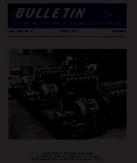

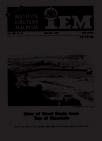





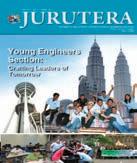



Take a look back at the Institution of Engineers, Malaysia (IEM) in its early formative years and one would see that it was a Herculean feat for the small group of founding members to get the Institution up and going.
This was in 1957, when Malaysia had just achieved Independence, so the influence of the British colonial masters was still very much entrenched in our system. That the IEM is what it is today is thanks to the huge sacrifices made by both our dedicated leaders and selfless members who have helped shape its history.
The Institution stands tall as a proud symbol for all engineers in the country, having grown with the nation to its current membership which stands at over 48,044 and a staff strength of 42 people.
In the beginning, one of the objectives of the IEM was to encourage more engineers to serve the nation. For the last 60 years, there have been many activities organised, such as site visits, seminars and annual dinners. In the same period of time, there have been 33 presidents from different engineering disciplines.
Our founder, the late Tan Sri Ir. Dr Haji Yusoff Haji Ibrahim, served a four-year tenure as the IEM’s first President from 1959 to 1962. He was an engineer with Kelantan Public Works Department (PWD) and later Director-General of PWD in Peninsular Malaysia.
When he came up with the idea of forming the IEM in 1957, he said: “I thought it was the right time to form an institution of our own to reflect our independence professionally.”
Tan Sri Ir. Dr Haji Yusoff was opposed to attempts by the British civil, mechanical and electrical engineering institutions to conduct joint examinations for local engineers. He felt he needed to take action as engineers in the civil service had to be a member of these British institutions in order to be promoted.
For his contributions towards the advancement of the profession and the nation, Tan Sri Ir. Dr Haji Yusoff was awarded Panglima Setia Mahkota (which carries the title Tan Sri) by the D.Y.M.M. Seri Paduka Baginda Yang DiPertuan Agong in 1968.
After his four-year term ended, he was succeeded by the then IEM Vice President, the late Ir. Raja Tan Sri Zainal bin Raja Sulaiman, who was

Refer to the table for a list of IEM Presidents.
The late Tan Sri Ir. Dr Hj. Yusoff Hj. Ibrahim 1959/62
The late Ir. Raja Tan Sri Zainal bin Raja Sulaiman 1962/64
The late Ir. Thean Lip Thong 1964/66
The late Ir. Tan Sri Datuk Ir. Prof Chin Fung Kee 1966/68
The late Ir. Ow Yang Hong Chiew 1968/69
The late Ir. Chan Peng Khuen 1969/70
Y.Bhg. Tan Sri Dato’ Ir. (Dr) Abu Zarim bin Hj. Omar 1970/72
Late Tan Sri Ir. J.G. Daniel 1972/74
The late Tan Sri Datuk Ir. Hj. Halluddin bin Mohd Ishak 1974/75
The late Ir. Chan Khee Pok 1975/77
The late Tan Sri Datuk Ir. Mahfoz bin Khalil April-December 1977
The late Ir. Tuan Hj Mohd Razali bin Bidin 1977/79
The late Ir. Wong Kin Hong 1979/81
Ir. Chiam Teong Tee 1981/82
The late Tan Sri Datuk Ir. Hj. Mohd Hassan bin Abdul Wahab 1982/84
Yang Bhg. Ir. Pang Leong Hoon 1984/86
Ir. Tuan Hj. Abdul Rahman Yaacob 1986/88
Yang Bhg. Dato’ Ir. Lee Yee Cheong 1988/90
The late Dato’ Ir. Mustafa bin Ahmad 1990/92
Ir. Chong Pick Eng 1992/93
Yang Bhg. Dato’ Ir. Abdul Rashid bin Ahmad 1993/95
Ir. Dr Ting Wen Hui 1995/97
Ir. Tuan Hj. Mohd Mazlan bin Md Ismail Merican 1997/99
Yang Bhg. Dato’ Ir. Dr Hj Ahmad Zaidee bin Laidin 1990/2001
Ir. Dr Gue See Sew 2001/03
Yang Bhg. Dato’ Ir. Prof. Abang Abdullah bin Abang Ali 2003/05
Yang Bhg. Datuk Ir. Prof. Dr Ow Chee Sheng 2005/07
Yang Bhg. Dato’ Paduka Ir. Prof. Dr Hj. Keizrul bin Abdullah 2007/09
Yang Bhg. Dato’ Ir. Prof. Dr Chuah Hean Teik 2009/11
Ir. Vincent Chen Kim Kieong 2011/14
Dato’ Ir. Lim Chow Hock 2014/16
Ir. Tan Yean Chin 2016/18
Ir. David Lai Kong Phooi 2018/20
then General Manager of National Electricity Board (NEB). He served as the IEM President from 1962 to 1964.
The IEM’s success story can be attributed to our able leaders and the unfailing support of our members, from its formation to the setting up of the IEM Council which has been instrumental in building and nurturing the Institution to what it is today. Here are some major milestones:
• Inaugural Meeting on 1 August, 1959
Held at Ir. Lau Foo San’s residence in 23 Perak Road, Kuala Lumpur, the inaugural meeting of IEM was attended by engineers from various government agencies and the private sector. It saw the appointment of Tan Sri Ir. Dr Haji Yusoff as President, the late Ir. Raja Tan Sri Zainal as Vice-President, Ir. Lau as Honorary Secretary and Ir. Chew Kit Lin as Honorary Treasurer.
All engineers who attended this meeting were considered among its founding members. Tan Sri Ir. Dr Haji Yusoff assured members that the IEM Constitution would have an even representation in terms of the different disciplines of engineering in future, when this issue was raised.
Dato’ Ir. Pang Leong Hoon wrote later in an article under the SubCommittee on Documentation & Recording of the IEM Historical Events, that “the unwritten rule of not having the President and Vice President from the same engineering discipline has been a practice for many years”.
Another successful outcome of the formation of the IEM in 1959 was the dissolution of the Joint Overseas Group of the UK professional bodies, which later donated its entire funds to the Institution.
At the inaugural meeting, 9 engineers were elected as the first IEM Council members. Apart from the four key positions, the rest were general members.
One of the Council’s main tasks was to register the Institution with the Registrar of Societies, Malaya, on 1 May, 1959. Once this was done, it
worked towards laying the foundation and setting up sub-committees to deal with various matters.
These included refining its Constitution and By-Laws, classifying the different branches of engineering, looking into the membership application and approval process and compiling a list of university degrees that would be recognised by the IEM.
The response to join the IEM was very good, with members represented in every state even at the outset. Its first two sessions, from 1958 to 1960, saw the Council approving 27 associate members, 30 graduate members and six associates.
While the top three positions in the Council remained intact for the third session 1960/61, the Honorary Treasurer position was taken over by the late Ir. Ow Yong Hong Chiew, who would later become the fifth president.
The other Council members comprised an elected representative each for the three branches of engineering and two more representatives for Other Branches 1 and 2.
• First Annual General Meeting
At the first AGM was held on 23 April, 1960, at the University of Malaya’s Faculty of Engineering lecture theatre in Kuala Lumpur, 22 members were present. Sixty years now and still going strong, the IEM will be having its 60th AGM on 20 April, 2019.
• The First Offices
In 1958, the IEM Honorary Secretary Ir. Lau used to keep the Institution’s documents in the boot of his car or in his office, Lau & Partners Kuala Lumpur, in Mansion House (now Malayan Bank Building).
For the first 10 years, the IEM had a nomadic existence, with the office of the Secretariat moving with the Honorary Secretary. At the end of 1970, when the second President was the General Manager of NEB, the IEM was offered temporary use of a section of the NEB district office building in Jalan Timur, Petaling Jaya, Selangor.
This location, now part of the multistorey building by Tenaga Nasional
Berhad (TNB, as NEB is now known as), served as the IEM Secretariat until it moved into its very own premises in Bangunan Ingenieur in Jalan Sultan, Petaling Jaya on 28 May, 1976.
Apart from the space occupied by the IEM Secretariat, the rest of the floor space of the 43-year-old Bangunan Ingenieur was rented out to various tenants. Today however, with the growth of the Institution and the Secretariat, there is now only one tenant (Pizza Hut) occupying a section of the ground floor.
•
From not having its own premises and squatting in borrowed locations –from homes and offices of the various Honorary Secretaries and later to even a hotel and the NEB store – the IEM had come a long way to finally having its own building completed in May 1976.
From as early as 1961, the IEM Council saw the need to start a building fund. This stood at RM86,508.08 in mid-1968 and grew to RM127,020.31 by end-1970.
Following the approval of the building plans by the PJ Town Board in June 1972, tenders were called and, in 1973, the contract was awarded to Messrs Ng Chye Heng at RM219,450.00, excluding PC items such as air conditioners and lifts.
The completion date was targeted for 14 April, 1974, one year after the contract was awarded but this could not be met due to the unprecedented inflationary woes that swept the world, including Malaysia, from late 1973 to 1975.
With the cost of building materials skyrocketing and the shortage of steel, cement and other building materials, construction for the building almost came to a standstill. However, with strong support from members, sourcing of building materials continued while various activities were organised to raise more funds.
The Council organised two fundraising dinners in 1975 and 1976 which collected a total sum of RM191,275.00. Contributions also poured in from numerous organisations and the IEM

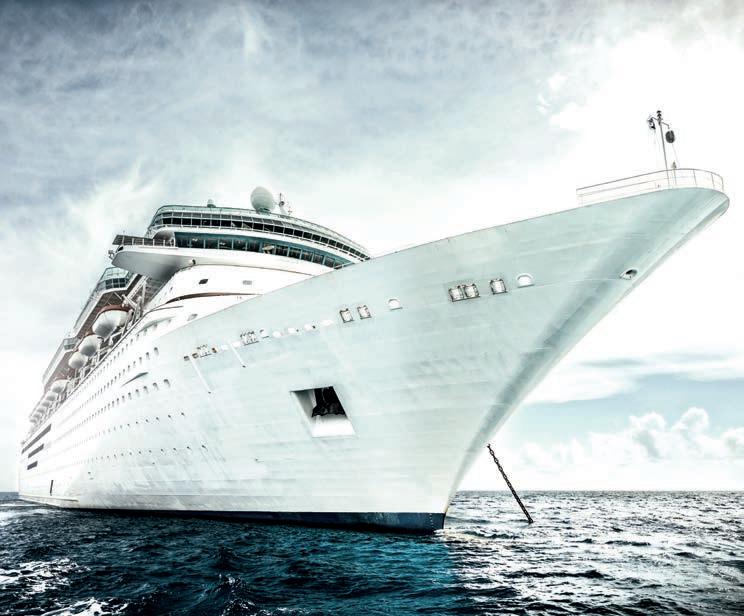
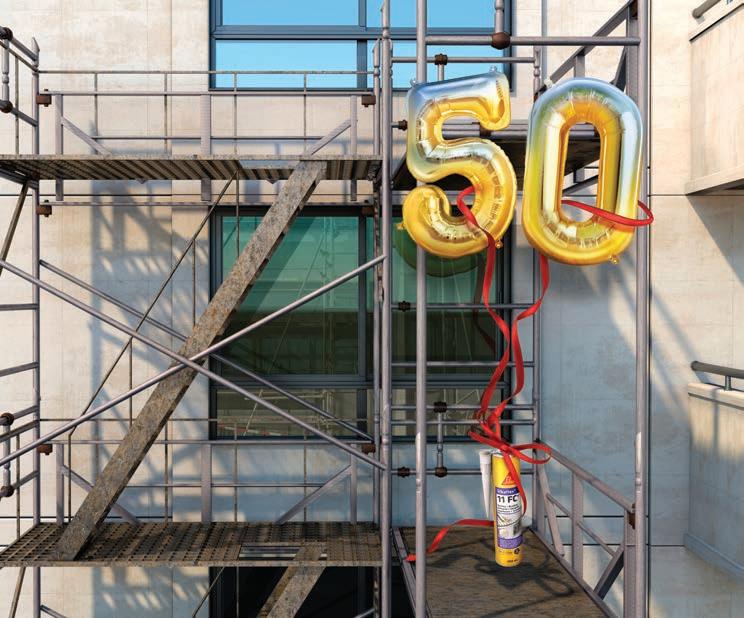
For 50 years Sikaflex®-11 FC+ has been a trusted solution for countless applications – a true all-round talent. This fast curing, elastic, polyurethane based adhesive sealant is used daily to ensure success on large and small building sites by contractors and tradesmen alike.
Sikaflex®-11 FC+ – from basement to roof, inside and outside, your trusted companion!
Thank you for your trust and the great legacy you have created!
members. The laying of its foundation stone ceremony was carried out on 27 June, 1974, by our first president-cumfounder, who contributed RM1,000 to the building fund as “bunga tangan”. Bangunan Ingenieur was finally completed in May 1976 at a total cost of RM692,265.50. It was officially opened by the then Deputy Prime Minister, Dato’ Seri Dr Mahathir Mohamad (now our eighth Prime Minister), on 22 April 1977.
The IEM Council had set up a committee for a building fund. Its function was later extended to include identifying suitable sites for the proposed IEM building.
Finally, it selected two lots of commercial land covering 4,257 sq ft in Jalan 52/4 in Petaling Jaya (PJ). With the application to purchase the land at RM20,485.20 from the Selangor State Government approved in mid-1964, the next stage was the design of the building.
With the good response from its members, the design and drawings were submitted to the PJ Authority for approval. However, the costs (ranging from RM288,000 to RM321,000) submitted for the tender exercise from mid-1964 to mid-1969, were too high. As a result, the eight tenders from the 14 contractors invited to submit their bids were rejected.
After refining the design and drawings with the detailed Bill of Quantities prepared, another tender exercise was held in mid-1970. Again, the amount for the five tenders received was way beyond the estimated cost and was subsequently rejected.
In the end, the Council decided to commission a local architect, Encik Baharudddin Abu Kasim of Architect Team 3 (Jurubena Bertiga), to redesign the IEM building with a distinct character and stature, both internally and externally.
After reviewing the various preliminary design submissions, the Council finally found one that was acceptable and presented it at the IEM’s 12th AGM on 25 June, 1971, for the members’ inspection.
The design sketches were for a building with a basement, elevated ground floor, first and second floors, a penthouse and roof garden which blended in well with the immediate surroundings.
Engineering consultancy and design services were also required and saw its dedicated members volunteering their services in these areas. Ir. Chan Weng Chu volunteered to do the structural design. He was one of the seven members of the Institution Building Committee led by Encik Abu Zarim bin Hj. Omar who was appointed to look into the design and planning.
Ir. Wong Kon Nam volunteered to supervise the structural construction while PCR & Rakan-rakan gave assistance in acoustics and electrical consultancy.
Ir. Dr H.C. Huang volunteered for air-conditioning and mechanical consultancy while Ir. Dr Ting Wen Hui served as the overall project supervisor and co-ordinator.
• Wisma IEM to the rescue
With an increased workload and more activities as the IEM moved into the new millennium, there was an urgent need for additional office space and more meeting rooms. This need was further compounded by the introduction and implementation of the CPD requirements of the Registered Professional Engineers by the Board of Engineers in 2003.
Besides more activities organised by the IEM, there was also increased participation by members. Bangunan Ingenieur, which only had two rooms to cater to activities, could only accommodate about 60 persons for each event.
As the IEM went on the search for another piece of land from the government for another building or complex, an ad hoc committee on Developing Institution Land was formed to consider several locations but without success.
After its name changed to AdHoc Committee on Acquisition of IEM Land/Building, about 10 locations were identified in various parts of the Klang Valley but these were also found to be unsuitable.
The search ended when three members of the committee chanced upon a prime stand-alone property in 21, Jalan Selangor, Petaling Jaya. Located across the road from Bangunan Ingenieur, it had sufficient floor area and a nett lettable area of 30,541 sq. ft. In addition, the four-anda-half storey building with a mezzanine floor was in good condition and had about 40 car park lots within and around its premises.
Its other facilities include two large auditoriums, many small lecture rooms, a space for library, open spaces and a ground floor for the administration offices.
The building was deemed a worthwhile purchase at RM13.5 million as the initial asking price was RM16 million. The sales and purchase agreement was signed on 5 July, 2007 and the acquisition was monitored closely by the Executive Committee and Standing Committee on Finance.
A Building Fund Committee was set up under the chairmanship of Datuk Wira Ir. Md Sidek bin Ahmad and Dato’ Ir. Dr Gue See Sew to raise funds for this building so as to reduce the amount of bank loan required.
Upgrading works proceeded from February to August 2009 after the IEM took possession of the building in November 2007. The building has a land area of 28,797 sq. ft. and a builtup area of 36,588 sq. ft. The 99-year leasehold tenure expires in 2062.
By end 2014, the fund-raising committee had raised RM3,256.20 with major donations and a list of donors’ names displayed at the entrance of the building, which was now named as Wisma IEM.
Contributions in the form of donations came from well-wishers for reroofing materials and light fittings for the lecture rooms. Various organisations also made donations such as air conditioners and the P.A. systems for the auditorium. A lift was later added to the building and this was supervised gratis by Ir. Teh Piaw Ngi of Messrs Jurutera Perunding PN Teh. The cost was RM138,000.00 for design and installation.
Wisma IEM was the venue for the 50th AGM of the IEM on 18 April, 2009, and was attended by 361 members.
The auditorium, named after one of its illustrious founding members, Tan Sri Prof. Chin Fung Kee, was opened on 7 November, 2009. The Geotechnical Engineering Division generously contributed RM200,000.00 for the cost of renovations.
The building fund for Wisma IEM is still open as its loan of RM12.15 million spread over 15 years from Alliance Bank Berhad has an outstanding amount of RM1.8million as at end-2018.
The crest design for the IEM, Malaysia came about following a competition held in January 1961. Ir. Philip Y. Chow won the best design.
Engineers and their professions are inscribed in the three sections on the shield. The top section reflects the IEM’s three major branches with electrical engineering represented by the power transmission tower, civil & structural engineering symbolised by the bridge in the centre and mechanical engineering signified by the cogwheels on the right.
To the left of the middle section, the book represents knowledge while the scale on the right reflects professional integrity.
Moving lower, this section depicts the elements and the environment where engineers work. The macro levels comprising earth, water and atmosphere are on the left while microelements such as electrons, neutrons and protons are
on the right.
The pencil and slide rule behind the shield depict the trade’s essential tools when IEM was born. Although engineers today use software applications to design, calculate, analyse, simulate and predict probabilities of various occurrences, the pencil and slide ruler are still symbols of how modern engineering began. It shows how engineering has progressed with time and is meeting the needs of the fast-changing civilisation.
Meanwhile, the national flower (bunga raya or hibiscus) and the Malayan tiger symbolise the country’s character and its people, with beauty and grace reflected in the flower and strength and resolve in the tiger.
7.
8.
12.
16.
17.
18.
21. Water Resources Technical Division (WRTD)
22. Women Engineers Section (WES)
23. Young Engineers Section (YES)
(UEDSIG) 2016
lst Branch Northern Branch – name changed to Penang Branch 5 January 1968, name changed on 12 March 2002
2nd Branch Sarawak Branch 3 February 1968
3rd Branch Southern Branch 18 August 1971
4th Branch Sabah Branch 10 January 1975
5th Branch Eastern Branch 9 May 1983, In February 2012, split into IEM Kelantan, IEM Terengganu and IEM Pahang Branch respectively
6th Branch Perak Branch 8 November 1983
7th Branch Melaka Branch 20 January 1986
8th Branch Negeri Sembilan Branch 20 July 1994
9th Branch Miri Branch 24 June 1998
10th Branch Kedah Perlis Branch 15 March 2000
11th Branch Kelantan Branch 13 February 2012
12th Branch Terengganu Branch 13 February 2012
13th Branch Pahang Branch 24 February 2012


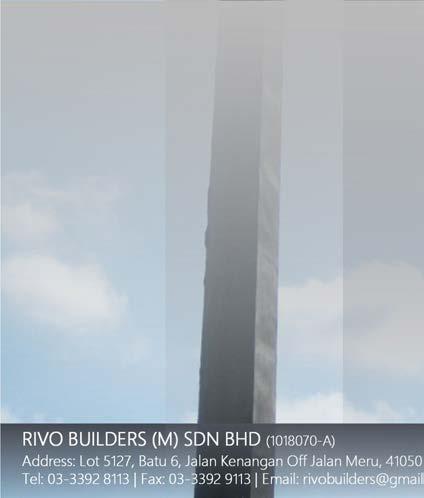
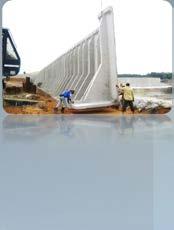

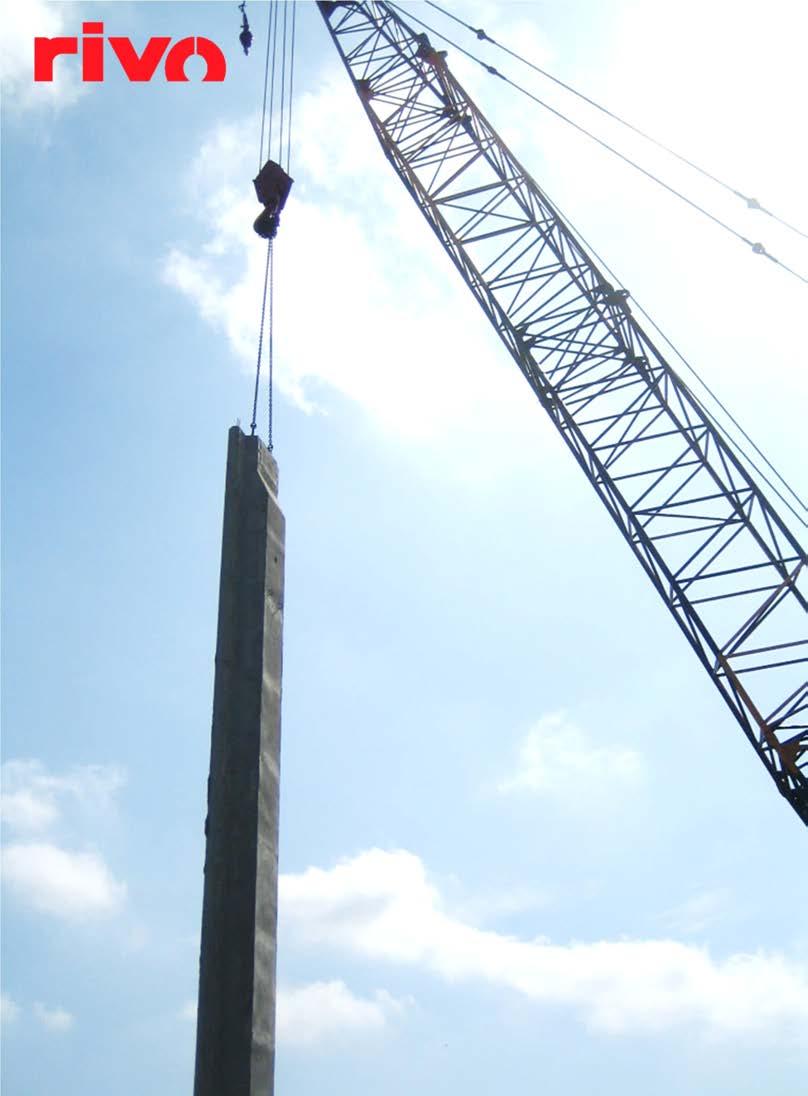

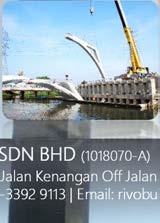
Iwill always remember my first encounter with the IEM. Kak Jam was the one who patiently assisted me with the process to join IEM. It wasn’t easy because many application cases are unique and mine was one of them, but Kak Jam was there to guide me every step of the way. I am sure all of us have gone through a similar experience.
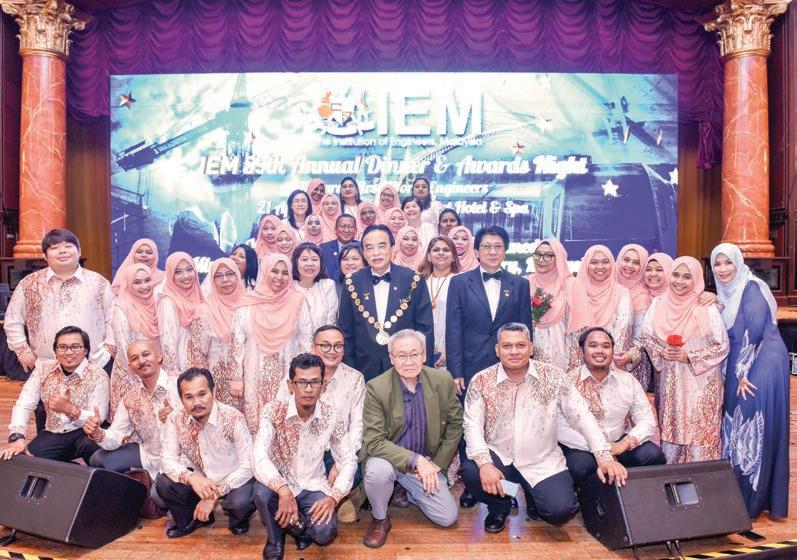
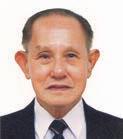
I would like to offer my congratulations to IEM on its 60th anniversary. Over the years, IEM has grown and matured. It must remain relevant as a professional institution with a national focus innovation.
Engineers are critical as our country transforms its economy to ensure a sustainable future. Don’t be contented to remain “back room boys”. Those who aspire to be leaders must move out of their comfort zone and become “techo-entrepeneurs” or developers as well as technical experts.
IEM should provide the right platform for the development of its members. The government’s eagerness to embrace the 4th Industrial Revolution (4IR) and the emergence of the gig economy emphasise the need for an intelligent workforce.
The 4IR requires a complete change of attitude and knowledge. We must provide a platform to prepare members to meet these changing needs. There should be closer interaction with industries and we must be constantly aware of the country’s needs.
IEM encompasses various engineering disciplines; our Constitution must maintain the original spirit and objective of INCLUSIVENESS. Small discipline groups should not be made to feel left out.
Members come and go, contributing to the organisation as and when we have the time, but the IEM Secretariat is always there and will continue to be there to ensure the smooth continuity of its operations. We may say “it’s their job” but without their dedication and passion, IEM will not be what it is today. If you want to know how hard they work, try coming in to the office after working hours or volunteer for events and travel with them to conferences. You will see how they take care of everything, not just the events but also you, the delegates.
This year, as part of IEM’s 60th anniversary reflection, let us take some time from the regular articles, stories of technical personalities in their line of work, engineering marvels and engineering events, to just have a moment to appreciate the IEM Secretariat.
As Bulletin Editor, I am honoured to be given this opportunity to recognise three of IEM’s longest serving employees. Their stories are a great tribute to how the organisation has thrived through the years. Here are the stories of Ms. Ooi, Puan Halimah and Mr. Loo.
I have to stop at three, because the next three longest serving employees joined the Secretariat in the same year: Ms. Janet, Ms. Sarita and Puan Norimah (who joined at the start of the millennium in year 2000). It looks like all great things come in 3s.
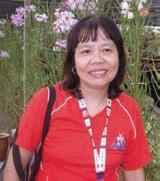



She is tough and always striving for perfection. She is not someone you would want to mess around with. The stories she tell are testament to IEM’s hard work to be where we are today, as a respected and, more importantly, internationally recognised organisation that leads and upholds the nation’s engineering industry.
The truth is, Ms. Ooi is not just respected (and sometimes feared) locally. I have also seen how regional conference delegate leaders refer to her for details on planning and operations. When it comes to conference administration, she has the answers.
Though she officially started work with IEM on 1 April, 1976, she actually worked there part time during the school holidays and while waiting for the HSC (Higher School Certificate, later Sijil Tinggi Persekolahan Malaysia) results. After Form 6, she was supposed to join the teacher’s college but was instead cajoled into joining IEM during the exciting years when the organisation moved into its new building. She can recall the preparations made for Tun Mahathir Mohamed to cut the ribbon and officiate the opening of Bangunan Ingenieur.
With her previous temp-work at IEM, she was tasked with introducing a catalogue system for the library. She later moved into the publishing side when the bulletin was printed in black and white.
For over 40 years, she has worked, supervised or managed every part of IEM. Today, she is the general manager of International Affairs, one of the most important portfolios in IEM because it reflects our capability as an engineering leader in the international arena. IEM is secretariat for international bodies such as FEIAP (Federal of Engineering Institutions in Asia & The Pacific), AFEO (ASEAN Federation of Engineering Organisations), and AER (ASEAN Engineering Register). This means IEM manages all applications for membership as well as events for country representatives and members of their organisations. This is how important IEM is to the international engineering community.
There is no doubt that Ms. Ooi loves her job despite the challenges. She is fascinated to be working with members who volunteer their time and money with no expectations of appreciation and yet still have the stamina to push on.
This makes her want to strive further. The friendships forged around the world in the course of running the organisation makes it all worth the while.
Looking back on the early years of IEM, when with only 5 employees, members and their spouses worked closely together to bring the organisation up. It was an interesting time. The close human-to-human interaction has made IEM strong and Ms. Ooi hopes that in the next 60 years, the importance of such interactions will not be neglected despite the increase in virtual communication.
Today, members come to IEM to attend courses, talks and meetings rather than to network and to forge relationships. We need to create this interactive environment and to continue promoting the relationship among members because this will strengthen us as an organisation.
As for Ms. Ooi, you can give her an award for every milestone she has walked with IEM, but nothing will ever pay for the blood and sweat she has poured into the organisation.
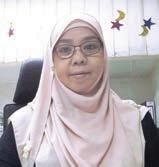
Many Graduate Members know Puan Halimah because she is the gatekeeper for the IEM mentorship programme. They will need to get the mentorship folder from her and to submit their progress reports until they are ready to take the Professional Interview after three years. Puan Halimah joined IEM’s Finance Department in 1996. From there, she was given exposure to handle activities for technical divisions such Highway & Transportation Engineering, Tunnelling & Underground Space and Geotechnical Engineering.
She later moved on to handle committees on training, logbook and CPD (Continuing Professional Development) as well as the IEM/BEM Graduate Examination Part 1/2 for graduates of non-recognised engineering programmes. This examination was discontinued in 2016. Today, Puan Halimah is busy with the Engineering Competency Development mentoring programme. Graduate Members contact her for clarification on the programme, which is now competency-based to go with the current IEM Professional Interview format. She is the “go-to” person for mentees and mentors and ensures both parties are able to forge a relationship that will create future professional engineers.
Puan Halimah has sweet memories of the awards that she has received for 10, 15 and 20 years of service. She feels good to be appreciated. As IEM turns 60, her vision is for the library to be a cozy, chill-out space where members come to work quietly. With the convenience of many websites with online books and research materials today, the need for physical reference books and other documents will be minimal. We hope Puan Halimah will continue her service until her retirement.

When I first joined IEM, I thought all Secretariat staff members were women. But it turned out that there were quite a number of men too, including Mr. Loo, the third longest serving employee who joined IEM in 1997 as assistant executive in the library. He later moved to membership, activities and IT. One of the few people familiar with the overall operations of the various sections in IEM, he is today the senior executive for membership and IT.
Mr. Loo was instrumental in compiling the IEM processes and database for the setting up of the IEM portal in 2010. He now heads the department which monitors membership subscription payments and the weekly email notification of activities to members. I am sure many members would have communicated
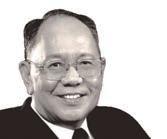
It has been an exciting journey, one that’s in step with the country’s development. Without a doubt, IEM and its member engineers have contributed greatly to the infrastructure, manufacturing and industrial development, uplifting Malaysia from a humble agricultural economy to the cusp of being a fully industrialised nation.
In engineering infrastructure, Malaysian experise is well regarded internationally. As our nation progresses, we have not forgotten to assist the less developed countries under our international slogan of “Prosper Thy Neighbour”. IEM has contributed to Malaysia’s international reputation by hosting the Secretariat of the ASEAN Federation of Engineering Organisations (AFEO) and the Federation of Engineering Organisations in Asia and the Pacific (FEIAP).
In the coming decade, there will be great opportunities in engineering infrastructure projects in the developing world, especially in ASEAN and Africa. IEM should leverage on international networking through AFEO and FEIAP to assist local engineering enterprises and help engineers gain more than a foothold in these infrastructure programmes.


with him over the years with regards to payment of subscriptions, registration of events or updating their personal data. Mr. Loo certainly believes that IEM will grow to be bigger and better.
We salute Ms. Ooi, Puan Halimah and Mr. Loo for their dedication to IEM. We also salute all staff members of the Secretariat.
To be honest, it is a huge challenge to manage and run a learned institution such as IEM with its many dignitaries, intelligent, accomplished and highly successful professionals, coming in as participating members or as volunteers. As members, we may feel entitled and quickly forget that the basis of our establishment is the strength of committed engineers who want to contribute to the profession.
We claim our successes with the organisation and often, we forget those who help us in the background; they are the wind beneath our wings.
A little courtesy can go a long way. A simple “thank you” when you next encounter any staff member of the Secretariat will show that you appreciate their contributions and dedication to IEM. Let us be courteous engineers.
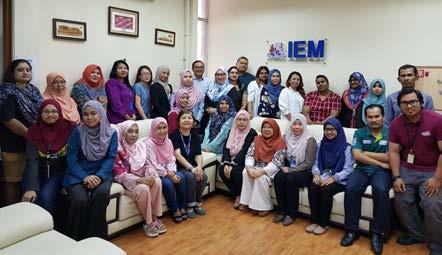










































































Venue : Wisma IEM
Approved
CPD : 14.0
Speaker : Ir. Lai Sze Ching
Time : 9.00 a.m. to 5.30 p.m.











Date : 11 – 12 April 2019 (Thursday – Friday)

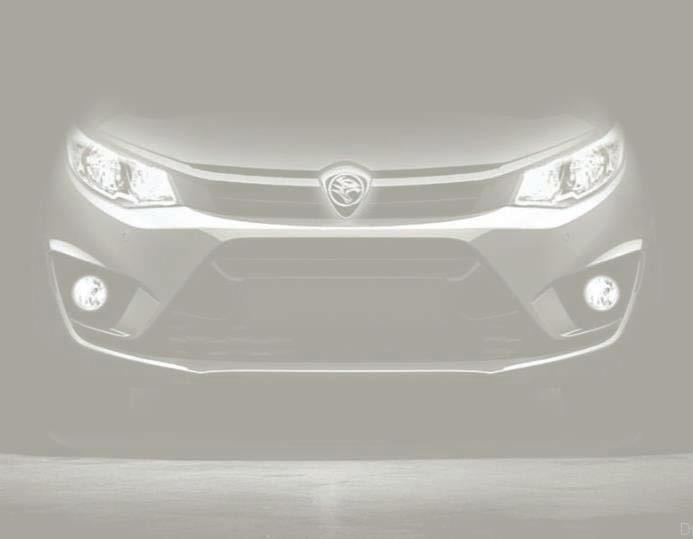

We are a supplier of high quality geosynthetic products used for soft soil stabilization, slope reinforcement, coastal erosion protection, river bank protection, landfills, drainage, road and railway construction.
Our Products:
NEXTILE NON-WOVENS
NEXFORCE HIGH-STRENGTH WOVENS
NEXGRID GEOGRIDS
We also provide design, specification, bill of quantities, cost estimate and drawings free-of-charge.












For further information on our range of geosynthetics products, please contact:
6638 Fax: 03-6142 6693
Lee Hui Seng : 012 355 9151 : 012 329 3378 (Whatsapp only) Gordon Teh : 012 355 0872
sales@neusynthetics com
NEHEMIAH GEOSYNTHETICS SDN BHD 45-3 Jalan PJU 5/20, The Strand, Kota Damansara, 47810 Petaling Jaya, Selangor Darul Ehsan.
Sales Team:
Lee Hui Seng (012-3293378) Fazrol (012-3163341)
Tel : 603 6142 6638
Fax : 603 6142 6693
Email : leehuiseng@nehemiahwalls.com
Email : gordonteh@nehemiahwalls.com
Email : enquiry@nehemiahwalls.com www.nehemiah-grp.com
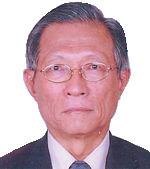
We have been promoting IEM in both the regional and international arenas. However, we must not lose sight of the welfare and survival of own engineers and engineering colleagues in IEM.
Our vision for the next 60 years is to provide members with information on availability of projects in ASEAN’s current areas of economic growth. These can be obtained from our sister organisations in the Asean Federation of Engineering Organisations (AFEO). Later, we can venture into developing countries outside ASEAN for more opportunities.
We should do research on market opportunity, availability of financing and how to obtain approval for the implementation of projects.
We should also compile data to prepare engineers to accommodate, adapt and face challenges such as advancement in technology and the nature of engineering practices and education.

Attaining the status of Professional Engineer (P. Eng) ought to be the primary objective for young engineer graduates. Under Section 10(2) of the Engineers Act 1967 (Rev 2015), a Professional Engineer registered with the Board of Engineers Malaysia (BEM) may:
1. Take up employment which requires him to carry out or perform professional engineering services.
2. Be entitled to use the title "Professional Engineer", "P. Eng" or its abbreviation "Ir." on his name card or any identification to describe himself.
3. Display any sign, board, card or any device to imply that he is a Professional Engineer.
4. Use the stamp of Professional Engineer.
Engineers Without Borders, a non-governmental organisation in the United States of America, listed the following top five reasons to want to be a P. Eng:
1. It impacts human civilisation advancement through specialised skills with high standards for ethics and quality assurance.
2. It solves the puzzles in everyday life through imagination of creative solutions that he has designed.
3. The licence opens the door to opportunities. Having the qualification is indication that you belong to a small group of people who are highly desirable to employers or for career advancement.
4. It represents a certification of trust to the public of your engineering skills. It means you have reached a certain level of competency acceptable to your peers. It means you are able to take more responsibilities and can handle complicated and important tasks.
5. It also means that, with greater responsibilities and competency levels, you can earn a salary higher than that of a non-P. Eng.
In the nutshell, a P. Eng qualification gives prestige and dignity to an engineer. Having interviewed many candidates, from young graduates to corporate CEOs, over the last 10 years, I have found that many fail because of poorly written essays. Some candidates did well on their experiences and technical reports as well as the oral interview, but they stumbled on the technical and ethics essays. For the purpose of illustration, I have appended comments from interviewers and reviewers to show the process of evaluating a candidate. There are two interviewers for each candidate. The principal interviewer is a senior engineer with over 10 years’ experience post-P. Eng experience while the second interviewer has over 5 years’ experience post-P. Eng. All failure cases are referred to a reviewer (very senior P. Eng)
(continued on page 24)
for a second opinion prior to being tabled at the IEM PI Board. Candidates have a choice to write in either English or Bahasa Malaysia and are given three hours to write two essays.
The following are some comments by the interviewers and reviewers on technical essays.
“Technical essay is too general and the candidate has not demonstrated his understanding and experience.” - Interviewer
“Essay written was too general. Candidate did not quote any example to support his case. He should have given one typical example and elaborated on it”. – Reviewer
CASE 2
“Poorly written, lack of knowledge on the subject”. – Interviewer
“Essay was written in very poor English. It was only one and half pages which was too short. Candidate had limited knowledge on the subject and only listed two issues and elaborated on one of them. Essay should have been written with more problems encountered and then elaborated on.” – Reviewer
CASE 3
“Candidate failed to demonstrate his knowledge in hydraulic, particularly on sewer line connection”. – Interviewer
“Candidate did not fully answer question set by the interviewer”. – Reviewer
CASE 4
“Shallow description in both Section A and B”. – Interviewer
“Section A was poorly written. Candidate had not shown sufficient and strong evidence on technical knowledge. Had shared some technical challenges in implementing the project, but essentially little engineering matters were discussed and explained”. – Reviewer
CASE 5
“Poor standard of English. Not able to present the points clearly”. – Interviewer
“Candidate should have spent his first 10 minutes organising his thoughts before proceeding with his essay. The essay was therefore not well organised and was rather short. There were still a number of important issues not highlighted”. –Reviewer
These comments are typical for all engineering disciplines. Technical essay questions are normally tailored according to the candidate’s working experience. Rightfully, it should not be too difficult to pass if the candidate had gone through sufficient training with solid engineering fundamentals and proper supervision. From the comments above, the following are major problems for the candidates:
1. Inability to put together thoughts in a coherent manner. Essays were written without clear ideas and direction. Lacked organisation and structure. The irony is that some candidates are able to submit very well-written technical reports but are unable to replicate the same for their essays! Writing an essay under pressure requires a clear mind, unlike preparing reports where candidates have the time to plan and conduct reviews. Nevertheless, candidates must learn to deal with the pressure with proper strategy.
2. Poor command of language, especially English. Candidates have the option to write in Bahasa Malaysia if they feel their command of English is poor. The inability to communicate properly in either language hampers

The Institution of Engineers Malaysia (IEM) was formed after Independence, to take over the activities of the Joint Group of the Institution of Civil, Mechanical and Electrical Engineers of Britain.
The IEM elected to form a single institution representing all specialisations and to allow for specialisations, technical divisions and special interest groups were set up.
IEM chose to be a Learned Society and initiated the enactment of the Engineer's Act. The Board of Engineers Malaysia was set up to carry out regulatory functions and for that reason, IEM reserved representation on the Board.
IEM is responsible for examination and qualification. A Class of Corporate Engineers was set up and the examination carried out by IEM. With the good foundation laid out by the founding members, the future was assured.
As befitting the Institution, the foundation stone of Bangunan Ingeneur was laid in 1977, by Tun Mahathir Mohamed, who was then the Deputy Prime Minister.
The Future needs to recall the Past and its significant milestone.



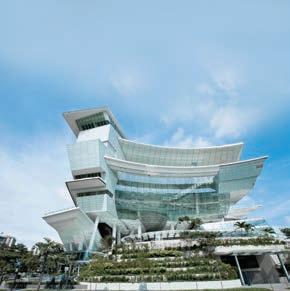
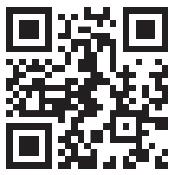

Explore our full set of Professional and Integrated PUBLISHING MANAGEMENT SERVICES:
» Project Management
» Crea�ve Management
» Ad Space Management
» Mailing Management
» Print Management
• Annual Reports
• Booklets • Brochures
• Bun�ngs • Business Cards
• CD / DVD Replica�ons
• Calendars • Cards & Invita�ons
• Cer�ficates • Custom Prin�ngs
• Envelopes • Folders
• NCR Bill Books • Notepads
• Leaflets • Le�erheads
• Paper Bags • Posters
• S�ckers • Others
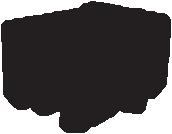








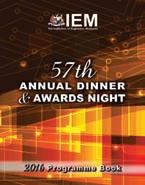


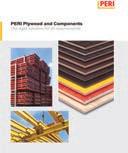






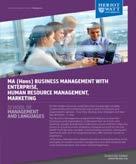




















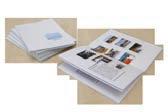
Not many of us realise that the current vision statement of IEM is “to be the premier professional organisation pivotal to Malaysia achieving Vision 2020”. It is coincidental that my term of office as President also ends in 2020, the year Malaysia is poised to become a developed nation. A new Vision Statement is currently drafted and it is timely to review how well our Institution has complied with its lofty ideals and of how the goals in my term of office will help bring us closer to it.
With its strong 48,000 plus membership, we certainly count as one of the biggest professional organisation in the country. Our representations in the Board of Engineers as well as in the Engineering Accreditation Council, speak volumes about our credibility in the engineering fraternity. We are non-partisan and have a strong culture of independence that have successfully shaped the conduct and activities of the organisation. Most important is that the Institution is financially stable with assets in the millions. That IEM is a premier professional organisation is undeniable.
As a premier organisation, IEM speaks out on engineering issues pertinent to national interests. We have continued with our position papers that we present to the authorities and press statements for the general public. Our members sit on many committees that require engineering input in the different disciplines that the institution represents. Furthermore, our members in their individual capacities are employed in important positions in the public and private sectors and in the course of their regular employment, make immense contribution to the national agenda for attaining Vision 2020.
As President, I have defined my agenda for my two year term until 2020, mindful of continuing the legacy of the Institution and of fulfilling its vision for 2020 and beyond. As I endeavour to accomplish my agenda, I am awed that I stand on the “shoulders of giants” – those imminent members who have brought IEM to where it is today. I can only attempt to emulate their good work as I set on the task of bringing the Institution further towards its vision.
Integrating IEM Branches with the Headquarters and bringing about a change in mindset that promotes trust and cooperation have been my prime concerns since I took office last year. I have visited every Branch in my first


nine months in order to drive home the point that Branches are an equally important part of the Institution. I may not have fully succeeded in this task yet but I am convinced that it is important to create the synergy that will not only enhance IEM as a whole but also enable the Branches to pursue goals that they are unable to do on their own.
As with other Past Presidents and Vice Presidents, I have initiated several visits to various Ministers, senior government officers and chief executives of major companies to engage with them on matters related to engineering. Specific issues have been taken up with each of them. I am proud that we have even managed to have an audience with the Honourable Prime Minister of Malaysia, Tun Dr Mahathir bin Mohamad who has graciously accepted the award of Distinguished Honorary Patron from the ASEAN Federation of Engineering Organisations (AFEO). He has also consented to be our Distinguished Guest of Honour at our 60th Annual Dinner. That IEM's presence is made known to and respected by our leaders in the public and private sectors are important if our voice as a professional institution and in representing the engineering fraternity is to be heard.
I have also continued with the task of making IEM a leader in the global arena by attending, in my capacity as President of IEM, in as many international functions and meetings as I possibly can. Through these efforts, tremendous goodwill has been established with international engineering organisations and with imminent engineering leaders in



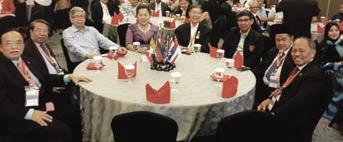
other countries which will eventually bring about tangible benefits for our members in view of the trend and impact of globalisation.
Accomplishing the many goals that I have set for myself during my term of office in IEM has been a much more difficult task than I had expected. I have come to learn that getting things done in a voluntary organisation is quite unlike what works in a business entity. There are problems and pitfalls that are ingrained and needs to be addressed if the Institution is to continue as a successful organisation into the future.
Many volunteers in NGOs have the misconception that their role is simply to comment and criticize, oblivious that what they said may neither be correct nor accurate. Such disservice can create animosity, confusion, distrust or disharmony as well as inefficiency in the organisational machinery.
All voluntary organisations work through collective actions that are designed to take advantage of the diverse opinions and resources of its volunteers. This is meant to ensure that the best outcome will be obtained. There is however, the downside where an individual volunteer’s accountability might not be apparent. Decisions may be made through secret ballot meaning that many a time, volunteers hold the power to decide with no individual responsibility. Individual responsibility in decision
making is important so perhaps the secret ballot has to be reexamined in the right context.
To improve on the quality of the collective decisions made by the Institution, we need to be more conscientious of the deliberation process which precedes decision making. It is in fact deliberation that is the cornerstone of good decision making. There must be effort made to understand the facts and the circumstances, to engage in meaningful discussions, to participate fully in advocating important standpoints and most importantly, to keep an open mind towards different opinions.
There is an urgent need to re-align the attitude of our volunteers and of our office bearers in particular and to channel their enthusiasm in the right direction - a long term task impinging on organisational culture, the constitution and its rules and regulations. Meanwhile, as I try to complete my term of office, I could only implore that our office bearers and volunteers in general do more to understand in greater detail, the issues and critical nuances confronting the Institution and to participate more fully in the deliberation process to ensure that the best decision, devout of personal agendas, will be the final outcome. If that can be done, I am sure that the Institution will continue to be a premier professional organisation and succeed well beyond 2020 and into the future.
I end with a quotation from Charles Darwin (1809): “It is not the strongest of the species that survives nor the most intelligent but the ones most responsive to change” n
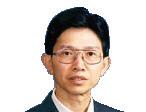
I am delighted that we are celebrating the 60th Anniversary of IEM. From humble beginnings in 1959, IEM has grown to approximately 50,000 members. We have indeed performed well in Learned Society activities for our members.
IEM’s mission is to serve its members and to promote sound professional engineering practices so that members can continue to add value to their projects.
Although we have done well in the continuous professional development programmes, we should also continue to manage and tap into our members’ wealth of knowledge so as to reap greater benefits for everyone. We should aim to make IEM the central repository of engineering knowledge and a one-stop engineering resource centre.
Another imperative mission of IEM is to advise our government regarding policies related to engineering issues on social economic development through our position papers. Thus far, 17 position papers have been formulated such as Mitigating the Risk of Hillsite Development, Prevention of Collapse of Scaffoldings and Falseworks as well as Water Quality and Cleanliness of Beaches.
Our vision is to further advocate and urge the government to implement our recommendations in position papers for the benefit of our nation.
(continued from page 19)
proper comprehension by the interviewers on the matters being written. Not being able to master a language with proper grammar, spelling, vocabulary and punctuation with reasonable literary flair would render the essay meaningless as it would not convey the thoughts of the writer.
3. Inability to articulate knowledge to impress the interviewers of their wealth of experience. Essays are found to be too simplistic or merely touching the surface of the subject, without examples, deliberations of facts and not delving into the detailed technicalities of the matter. In universities, engineering students are taught to write assignments, laboratory reports and subsequently, in the course of their work, would have written many technical reports, so they should be able to replicate this during the interview session.
4. Some candidates cannot put together convincing arguments in their essays because they have not gone through a thorough training process. They may have a sufficient post-graduate working period (minimum three years) to qualify for the interview but if they have been job-hopping, they only spend short periods with each employer. As a result, they will not have gone through the whole engineering project cycle which is commonly between 3 and 5 years. They may have experienced the whole process only in bits and pieces with each employer; this is not holistic or rigorous enough to prepare them for the interview. It is important that aspiring P. Engs find suitable employment and training supervisors to ensure they get proper guidance and supervision.
The intent of the technical essay question is to find out the candidate’s communication skills, analytical and critical mind as well as maturity of thoughts. It is also to gauge the awareness and concerns of engineers in safeguarding public interest in their judgments. The principal interviewer would normally set the question at the end of the oral interview in accordance with the candidate’s training. Typical technical essay questions are listed below.
EXAMPLE 1
The term “ value engineering ” began with a creative, team-based approach which allowed the generation of alternatives to the existing solution. The implementation of Value Management/Value Engineering (VM/VE) in construction project is new in Malaysia.
i. What are the differences between VM/VE practices compared to the normal roles that have been practised by the construction project management consultant.
ii. Discuss the problems/difficulties you have encountered in implementing it in one of your projects. Describe the solutions that you have taken to overcome these problems.
iii. What are the drawbacks (policy/culture/legal/ethical) in implementation of VM/VE? Discuss your answer by providing examples. What are the liabilities of Value Manager with the implementation of VE in design?
The issues of Indoor Air Quality (IAQ) and humidity have been in the limelight lately. Recent examples of such problems are mould and fungus problems in hospitals.
i. What are the factors affecting indoor air quality problems?
ii. What are the legislations in Malaysia or Standards that govern the IAQ in buildings? Discuss the relevance of such legislation or standards in relation to current industry practice in Malaysia.
iii. Give a brief methodology of how to diagnose IAQ problems.
iv. Discuss on how you would do to ensure the building you are designing will not suffer IAQ problem during operation.
EXAMPLE 3
Elaborate on:
i. The conceptual and detail engineering design of the metering skid for Tanjung XXXXX drilling platform.
ii. Explain the Coriolis meter principles and implication to system design/ impact on design.
iii. Elaborate on the impact of design flowrate if it is higher or lower than the recommended design specifications.
EXAMPLE 4
Discuss how universities and academicians in the engineering fraternity can assist Small Medium Industries Entrepreneurs (SME) in upskilling and upgrading their capabilities in terms of manufacturing professionalism and quality of product.
If SMEs raise the issue on financial constraints as a stumbling block to implementing “Good Manufacturing Practice (GMP)” principles, how will universities and academicians provide assistance to achieve this?
EXAMPLE 5
Explosions in industrial facilities lead to loss of life, financial capital loss and environmental pollution. As you have gained experience in quality control engineering, how would you eliminate such an accident from happening?
EXAMPLE 6
What are the challenges of Unmanned Aerial Vehicle (UAV) development and operations in the Malaysian civilian environment.
EXAMPLE 7
Your institute is going to undertake a group of young electrical engineers to attend a 33/11kV transformer maintenance course. As a trainer, you are required to develop the course for the group. Describe the procedures to develop the course on 33/11kV transformer maintenance.
EXAMPLE 8
Your client is desirous to install 500 kW grid-connected photo voltaic system in his building with the intention to sell some of the electricity generated to TNB. Explain the design process, statutory requirements and approval process of the authorities.
EXAMPLE 9
As a design engineer, elaborate on the various considerations that have to be taken into account in the design of building structural components with due regards to sustainable construction.
These are typical questions put forward to candidates from various backgrounds, from design, operation and maintenance to academic. In principle, the questions are set to test candidates on (1) general knowledge, norm or common engineering practice of the subject matter, (2) legislations or standards governing the subject and (3) critical appraisals or assessments on current engineering practice.
The main purpose of the Code of Professional Conduct essay questions is to allow candidates to demonstrate their professionalism in discharging their duties. For the ethical questions essay, the most common comments from interviewers and reviewers are:

Y. Bhg. Dato' Ir. Prof. Abang Abdullah Abang Ali
Past President
& Hon. Fellow, Institution of Engineers, Malaysia
IEM has come a long way after 60 years and is now well recognised nationally as well as internationally as the learned society for engineering in Malaysia. However, a lot more can be done.
For any profession to excel, there must be advocacy, regulatory and learned society initiatives in the country. Malaysia does not have an Academy of Engineering, but we can work closely with the Academy of Sciences, Malaysia (ASM) and the ASEAN Academy of Engineering & Technology (AAET) in advocacy work.
The Board of Engineers, Malaysia (BEM) is the registration body but the issue of engineers who have not registered and the small number pursuing professional status, require serious attention. IEM, Malaysian Society for Engineering & Technology (MySET) and Technological Association of Malaysia (TAM) as well as many local chapters of International engineering societies, must be encouraged to work together for the good of the profession. IEM can champion advocacy, regulatory and learned society initiatives in the country.
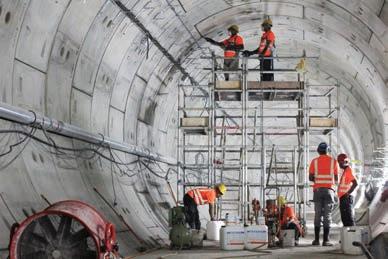
“Candidate did not submit a proper and complete Section B essay. His essay was too brief and did not address his understanding of the relevant IEM regulations on professional conduct. Candidate has to take a more serious view of his Section B essay and to improve his attitude and professionalism”. - Interviewer
“Candidate did not understand what a bankable report was. Essay was written in very poor English and was too short and incomplete”. – Reviewer
“He has to improve writing skills in English if he intends to do well in his engineering career. His written essay on Code of Ethics is particularly appalling and it appears that he is unprepared for PI”. – Interviewer

“Candidate was not fully prepared in his essay writing and did not fully understand our IEM/BEM Code of Professional Conduct and contemporary ethical issues in the engineering profession. The essay written was rather short with bad grammar, poor spelling and no proper heading”. – Reviewer
CASE 3
“The candidate was not able to present his ideas in detail to show his understanding of Code of Conduct/Ethics. Candidate was unable to present his thoughts in a structured and concise manner on the essays (both Section A and B)”. – Interviewer
“Candidate could not fully understand our IEM/BEM Code of Professional Conduct and contemporary ethical issues in the engineering profession. He simply wrote two short paragraphs with four sentences for his answer. He clearly did not understand the question and was unable to answer with suitable content and relevant examples”. – Reviewer
CASE 4
“Technical essay was well written according to requirement. However, the candidate didn’t elaborate adequately on Code of Ethics question. Obviously lacking in technical knowledge and maturity. Her attempt at the Code of Ethics question also fell short”. – Interviewer
“Code of Ethics question fell short as agreed with Principal Interviewer”. – Reviewer
CASE 5
“Ethics essay failed to express the conflict of ‘professional’ interests and without clear example(s) to demonstrate his thoughts. Only general conflict issues were mentioned”. – Interviewer
“Essay not well debated and articulated. Too simplistic approach and lacks indepth/critical analytical thought process. Did attempt to explain some points, but kept repeating them”. – Reviewer
The Code of Professional Conduct is available from BEM website. Essay questions on the Regulations on Professional Conduct can be accessed from IEM website. There are 13 essay questions which cover the whole spectrum of engineering practice in Malaysia. Candidates are normally required to answer one question closest to their working experience.
From the above, it can be seen that most failures are related to the inability to relate the Code of Professional Conduct to reality. Candidates are either ill-prepared to sit for the interview or lack the capability for story-telling to relate the code to real-life situations. General knowledge and maturity of thoughts are also important to enable a candidate to relate the many circumstances in which one’s professionalism is being tested. Candidates should not only conversant in their technical knowledge, but should also have a general understanding of ethical issues related to the profession.
Some people feel that the Code of Professional Conduct can be taught in universities or at seminars. While this may serve as a good introduction to the Code, the actual test is when graduates are faced with a real-life situation. In a study by
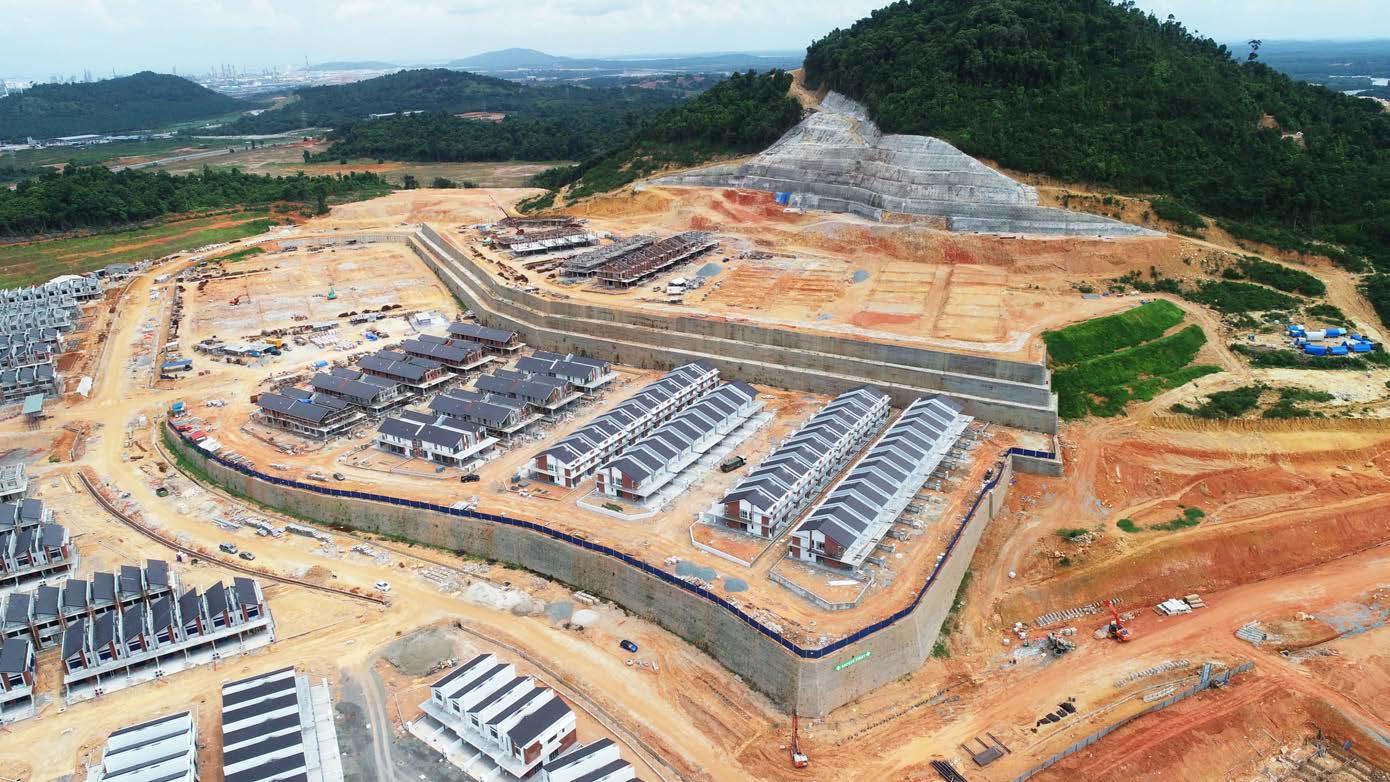



The next 60 years for IEM should be seen in the context of my generation which used the Slide Rule when taking university examinations instead of the IT tools of today.
As a Learned Society, we must be aware of challenges which are always evolving within and without. I see our membership growing only if we can provide services and products which serve the members’ needs.
I believe the word “engineer” may not have the same meaning by then. Engineers will be people with exceptional capabilities. Although friction-less bearings will be the order of the day for mechanical engineers, this discipline and others may no longer survive or exist being assimilated into a brand new discipline/s.
IEM must continually evolve and adapt; I believe its role today remains the same, serving the needs of its members and employing the technology of the day. Humanising technology is a necessity. IEM’s archived knowledge and the accessibility to members instantaneously will be a challenge.
Institut Integriti Malaysia in 2017 , it was reported that 35.8% of respondents felt that “Penerimaan hadiah dalam bentuk wang, barangan atau perkhidmatan sebagai balasan atas perkhidmatan yang diberikan” was NOT considered a corrupt practice! This is shocking indeed; it means one out of three young graduates consider accepting gratifications for services rendered as a noncorrupt act.
With all the current world technological sophistication and financial wizardry, young engineers are easily exposed to many compromising circumstances. Therefore, it is insufficient for a P. Eng candidate to merely regurgitate word-byword the Code of Professional Conduct in his essay without truly understanding the philosophy behind the creation of the Code.
Aspiring P. Eng candidates need to prepare themselves properly before sitting for the interview. Examples mentioned in this article are not confined to young engineers only as even middle-aged candidates have suffered the same fate. Although BEM and the IEM are desirous to increase the number of professional engineers in this country, it has to done with caution as only the deserving, qualified and competent candidates should be passed.
A candidate are given 3 hours to complete the two essays. It is important that he manages his time properly between the two essays. Each essay should have sufficient length with proper legible handwriting. Proper sentence structure must be used and point-form write-ups should be avoided.
Generally, in order to write a good essay, one needs to remember the following essay structure:
1. A clear introduction with a thesis statement (an answer to the question or a response to the task) and a well-defined structure
2. Logically structured body paragraphs which include supporting evidence or example.
3. A clear conclusion which restates your topic and summarises your essay and thesis.
For the technical essay, it is very important that candidates spend some time to gather their thoughts prior to writing the essay. The essay must include examples and elaboration of the examples. Critical appraisal or problem solving would be an added advantage. To aid the preparation, candidates need to also read articles in magazines and journals that are related to his job scopes. A well-read person would likely be able to present better views to the question asked.
As for the ethics questions, candidates need to familiarise themselves with the pre-prepared questions. Most likely, they will be asked to write on a topic closest to their job scopes and experience. As professional ethics is a set of standards defined by the professional community which serves as a guide for behaviour expected in a professional, they should also keep themselves abreast of ethical issues surrounding the engineering profession. General knowledge of financial crisis, project failures, corruption cases, fraud cases as well as government policies are also important to add flavour to the essay. A professional engineer with the prefix “Ir” carries greater responsiblities, so candidates should approach the professional interview with the highest standards expected of them.
Note:
The writer would like to thank Ir. Haji Shamil bin Abu Hassan for providing some of the sample technical questions in this article.
1Institut Integriti Malaysia, Laporan Hasil Dapatan Kajian Persepsi Mahasiswa Mengenai Rasuah di Malaysia 2017; Datuk Dr. Anis Yusal Yusoff & Zarina Mohamad Amin; http://integriti.my/wp-content/ uploads/2017/07/Hasil-kajian-Mahasiswa.pdf
Ir. Hj. Arul Hisham bin Abdul Rahim , Principal of AHAR Consultants, is a registered Professional Engineer who serves on the professional interview board of IEM. He can be contacted at arulhisham@ aharconsultants.com.

Y. Bhg. Allahyarham
Ir. Raja Tan Sri Zainal bin Raja Suleiman
Allahyarham Ir. Raja Tan Sri Zainal was one of the founder members of IEM and its first Vice President. He served for many years in the then Central Electricity Board. In 1964, when the second expatriate General Manager of CEB, J. Sharples retired, and Ir. Raja Tan Sri Zainal became the first Malaysian appointed to the post. When he became General Manager of Lembaga Letrik Negara (LLN), he gave full encouragement to his staff to participate actively in the Institution’s activities.
For his dedicated services to the nation, he was awarded the Panglima Setia Mahkota by D.Y.M.M. Seri Paduka Baginda yang Dipertua Agong in 1970. In October 1970, through the good offices of Ir. Raja Tan Sri Zainal, the IEM was offered an office space at Jalan Timur, NEB District Office. He was also made an Honorary Fellow of IEM for his services to the Institution. For his effort, IEM records this recognition by giving him this auspicious award and a place in the Engineering Hall of Fame.

The Late Ir. Chiam Teong Tee
The late Ir. T.T. Chiam was the President of IEM from 1981/1982. He was conferred the IEM Honorary Fellowship in 1986 and was a Fellow Member of other institutions such as Institution of Civil Engineers United Kingdoms, (ICE, UK), The Institution of Engineers, Singapore (IES) and American Society of Civil Engineers (ASCE). He served as President of the Federation of Engineering Institutions of Southeast Asia & the Pacific (FEISEAP) in 1981/1982, Chairman of Government’s Engineering Sub Committee on Uniform Building Bylaws (UBBL) 1974-1995, Council Member of National Productive Centre 1970-1975, President of the Engineering Alumni Association Universiti Malaya 1968-1969, Chairman and Member of the Industrial Standards Committee of SIRIM1968-1980 and Editor of the UNESCO Journal of Engineering Education in Asia. He was a founding member of the Engineering Accreditation Council (EAC) and a board member of the BEM, ACEM and FRIM. He was a Fellow of the Malaysian Institute of Arbitrations and served on both the IEM Arbitration Panel and the Kuala Lumpur Regional Centre for Arbitration (KLRCA). As IEM President in 1981, he set up the IEM Arbitration Committee and helped prepare the initial draft of the IEM Arbitration Rules. He also initiated the complete redraft of the new IEM Constitution and Bylaws to include the use of the title, Ingenieur, for all members, irrespective of grades of membership.

In my Presidential Address delivered at the 49th AGM, I advocated for IEM and its members to change from being nation builders (service providers) to becoming nation movers who will mould our nation’s future. This is not something that can be achieved overnight and, although much progress has been made, there are still challenges ahead.
What would I like IEM to be in the future? I’d love to see IEM re-engineer itself into becoming THE Organisation that our leaders turn to when they are formulating policies on engineering and THE Organisation that people go to when they want to learn more about engineering, when they need advice, when they have a question/issue/problem related to engineering or when it comes to engineering education and the engineering profession. At the same time, IEM must engage more with our stakeholders, play a more visible role in civil society and speak out without fear or favour towards making Malaysia an inclusive and progressive nation.
To all members of IEM, let us devote more time and resources to serve our Institution and to display our membership credentials with pride.











































































Academician Dato’ Ir. Lee Yee Cheong was IEM President from 1991-1992. He is a Distinguished Honorary Fellow of IEM,President of the World Federation of Engineering Organisations (WFEO) from 2003-2005 and is Honorary Fellow of the Institution of Electrical Engineers, UK; the Institution of Civil Engineers, UK and the Institution of Engineers, Australia; Institution of Engineers, Mauritius and Honorary President of Commonwealth Engineers Council (CEC).
He is founding Secretary General and Senior Fellow of the Academy of Sciences Malaysia; Founder President of the ASEAN Academy of Engineering and Technology; Foreign Fellow of the Australian Academy of Technological Sciences and Engineering; Corresponding Member of the Pan-American Academy of Engineering; Board Member of the Inter Academy Council (IAC) of the world’s scientific academies 2001-2004; and Special Advisor to IAC Co-Chairs on Sustainable Energy 2008-2009. He is the Malaysian Chairman, Governing Council, International Science Technology and Innovation Centre for South- South Cooperation under the auspices of UNESCO (ISTIC), Kuala Lumpur. Academician Dato’ Ir. Lee was conferred the Malaysian state awards of DPMP and KMN for services to engineering. He was conferred the Honorary Officer in the Order of Australia for the services in Malaysia/ Australia relations.
SIZE: 21CM (W) X 13CM (H)




Approved









2-Day Course on “Fire Control Concepts & Design of Active Systems”
Date : 24 – 25 April 2019 (Wednesday – Thursday)
Time : 8.30 a.m. to 5.30 p.m.
Venue : Wisma IEM
CPD : 13.0
Speaker : Ir. Gary Lim Eng Hwa
With deep regret, we wish to inform that Y.Bhg. Tan Sri Dato’ Ir. Talha bin Hj. Mohd Hashim passed away on 4 March 2019. On behalf of the IEM Council and management, we wish to convey our deepest condolences to the family. IEM Editorial Board







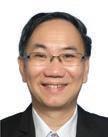
IEM PRESIDENT 2009~2011
I wish IEM has a membership of more than 100,000, comprising engineers, engineering technologists and technicians. IEM must speak loud, without fear or favour and represent the engineering fraternity based on solid engineering principles. IEM must continue to represent the Malaysian engineering profession globally, be leaders in ASEAN, Asia and the Pacific as well as global organisations. IEM must improve membership services with technical talks, international conferences,nurturing young professionals and social and business networking. IEM must play an active role to promote STEM education in schools and participate actively in institutions of higher learning as a curriculum reviewer, guest lecturer and industry advisor. Be a decision maker and trendsetter.

An Autonomous Surface Vessel (ASV) is a type of unmanned robotic platform utilised for the marine environment. Currently, there is a significant increase in the adoption of Maritime Autonomous Systems (MAS), with a range of robotic technologies being adopted in the military, commercial and scientific and research sectors.
While Autonomous Underwater Vehicles (AUVs) have been widely used for many years, an increase in the use of ASVs, particularly for environmental monitoring, is more apparent than ever.

ASVs are increasingly being used as fundamental data-gathering tools by research institutions and scientists across the globe, allowing further exploration of our waters and greater understanding of our planet. Previously, these explorations seemed to only be noted amongst the scientific community, but highly publicised events, such as the 2010 disastrous oil spill in the Gulf of Mexico from the Deepwater Horizon platform, have drawn focus to the use of robotics in order to combat and measure the environmental damage to the area and its inhabitants.
One obvious advantage of using ASVs for environmental monitoring is that they allow examination of events that are too dangerous, time-consuming, repetitive or impossible for humans to undertake. The ability to measure these events with unprecedented distances covered and in quicker timescales, provides crucial efficiency in dealing with large scale environmental disasters and increases our knowledge of the our widely un-investigated oceans.
Unlike traditional manned platforms, ASVs have a very low noise signature. For such environmental monitoring tasks such as Passive Acoustic Monitoring (PAM), it is crucial that the vessel has a low noise signature so as not to skew data gathered, including recording of vocalisation from marine mammals. The other crucial advantage is the reduction of on-site time and maximisation of operational hours. On the whole, this reduces the carbon footprint of the operation and the effects of the mission on the area. Further to this, for small scale operations for data collection, smaller ASVs can be used to reach difficult areas such as caves, harbours and bridges without the need for a support vessel. It is clear that these maritime autonomous systems – ASVs in particular –provide low impact solutions for marine observations and data collection across a range of environmental monitoring tasks such as water quality monitoring and sample acquisition, marine mammal and aqua culture tracking and current and wave profiling. As technological advances continue to improve, these systems will gain more traction in scientific/research communities, enabling us to achieve greater understanding of the marine environment and its inhabitants and intricacies.[1-3]
ASVs can range in complexity but must include four main elements: Body (hull), propulsion system, navigation system and data collection and transmission system. There are no standards regulating ASVs and these differ greatly in appearance and functionality, depending on the production of the unit and its intended function. ASVs are a relatively new technology and have only a brief history. Early ASVs were designed mostly for educational use. Further advancement of ASVs has been due to the rapid progression of technology.
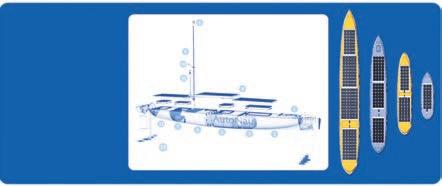
also characterised by such features as:
1. Openess: One of the main problems is integration of the many services and technologies. It has been achieved due to the application of open architecture based upon high-tech, but verified solutions. This means the ASV can be reconfigured for different applications.
2. Portability: The system works on a variety of hardware platforms, a container with command and control post as well as on training sites. The ASV platform should be portable and can easily be transferred to another location if required.
3. Scalability: The system should be operational as a single agent application and in team formation or in multi-agent applications.
4. Modularity: Bearing in mind the multitude of goals, it is necessary to provide an open-ended internal architecture of the system to ensure the possibility of multiple applications of its key elements together with easy replacement of different elements with their alternatives.
There is a great amount of potential in using ASVs to benefit our environment. For example, ASVs can be applied to environmental monitoring tasks, which encompass different types of data collection and observation. There are other

Kim Kieong
IEM PRESIDENT 2011~2013
I am honoured to have been closely involved with IEM since 1993 and to have served in various capacities, from Honorary Treasurer to President (2011/13). My fervent wish for IEM in the coming years is for it to be proactive and to play a leading role in all aspects of engineering, from quality education, professional development and national infrastructure development policies to engineering research and innovation, environmental protection and other related issues, which will facilitate wealth creation and propel Malaysia into the ranks of developed nations.
In the process, IEM must stay focused and be vocal in upholding the legitimate interests and well-being of its members and the engineering profession.
I take this opportunity to congratulate IEM on its 60th birthday. May IEM grow from strength to strength for the next 60 years and beyond.
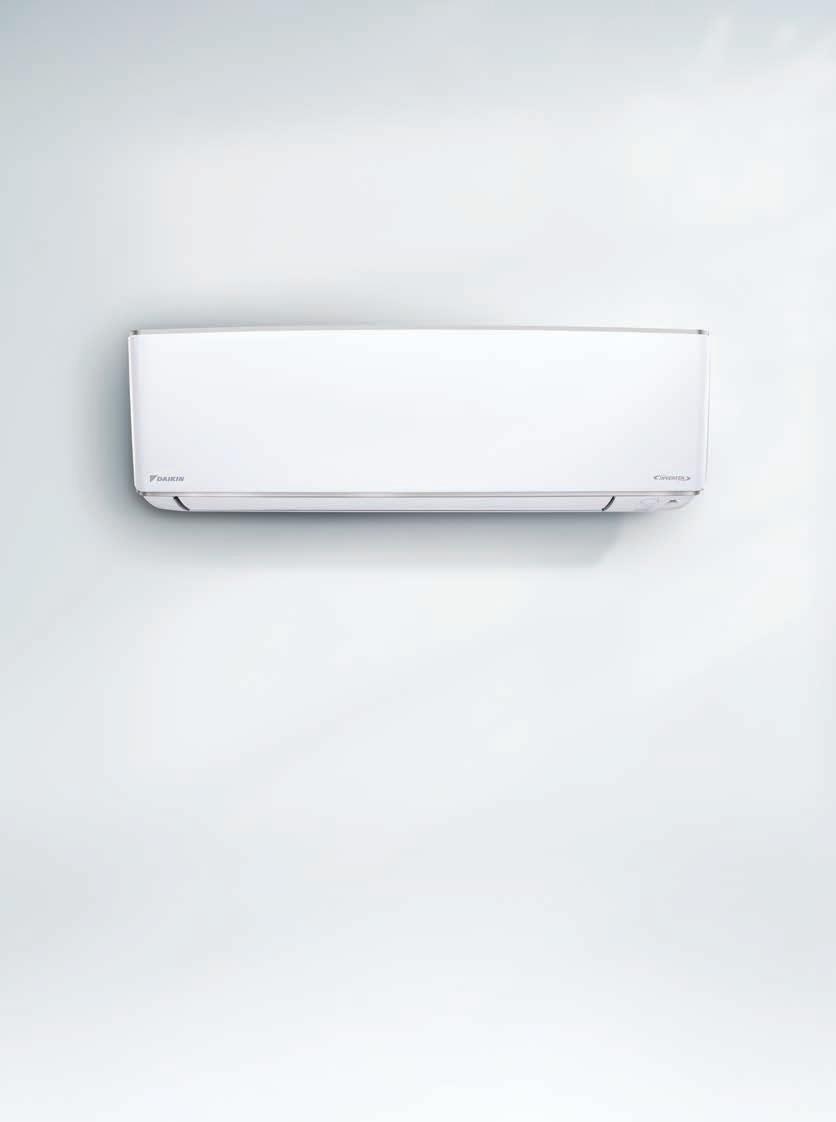


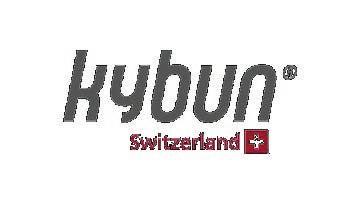
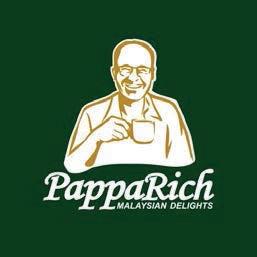






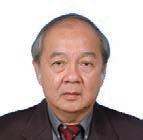
CONGRATULATIONS for this issue of Jurutera to celebrate the success of IEM as the largest civil society organisation in Malaysia that nurtures “engineering” to play a pivotal role in national development. My long association with IEM, from being an ordinary member in 1977 and serving in various committees to being President in 2013/14, will always be something to cherish. It will be wonderful to see IEM expand its role to be the nation’s champion in nurturing the entire engineering fraternity, comprising engineers, engineering technologists and engineering technicians,towards the 4th Industrial Revolution and in making Malaysia a peaceful, harmonious and sustainable nation for all to live in.
data collection methods, including satellite systems and networks of stationary and floating buoys used today by scientists and researchers; however there are limitations to these systems, such as the range of buoy networks and the accuracy and cost of satellite systems. In both areas, ASVs can offer a solution or contribute as an additional resource to collecting ocean data. Many more aspects of environmental monitoring, such as mapping oil spills, have been explored to show how ASV technology can help the environment.
ASVs can also perform tasks in the ocean, such as gathering and delivering water samples or cleaning up ocean contaminants. Current methods of sample collection and cleaning hazardous spills are costly, time consuming and require a lot of manpower.
The application of ASVs in environmental monitoring and task performance areas can lower human and animal vulnerability to certain environmental issues. In the area of weather for example, an ASV may be able to collect new ocean data that will contribute to storm forecasting systems. As more accurate data is fed into weather models, it will produce more accurate outputs. By contributing data to these models, ASVs can improve the accuracy of storm predictions. The improved accuracy may be used to provide more attention to help areas at higher risk of damage from these environmental events and will allow for staging directors to more effectively plan the movement and distribution of supplies and resources during and after the disaster. ASVs also show promise in helping efforts to study current climate change. ASVs can collect oceanic data to help produce models of important currents that transfer warmth around the globe.
Another alternative is to utilise an unmanned ASV as a hub for multiple measurements. It can provide typical weather station information, i.e. metocean data, provided that necessary sensors are installed onboard. Additionally it can conduct the underwater measurement e.g. seawater temperature by lowering a measurement probe e.g. CTD attached to steel cable and electrically controlled winch. Measurement data can be sent via radio telemetry or satellite for quick access. It is also possible to deploy multiple ASVs to cover a bigger area. Since ASVs are operated autonomously, very little operator intervention is required, thus reducing manpower cost. The availability of GPS enables the ASV to operate within desired locations with ease. All these commercially and widely used technologies make unmanned ASVs more economical compared to other robotics platforms such as ROV and AUV.
The utilisation of ASVs for marine applications is gaining real momentum. The significant amount of cost savings, in terms of time and operational expenditure, has boosted the importance of ASVs in many marine applications, be it near shore or open sea deployment.
The adding of intelligent capability to ASVs will certainly assist in on-site decision making and better quality data gathering activities. Future extensions of ASV-like functions such as unmanned tankers and servicing ships, are being developed by a number of companies around the world. It is envisaged that in the future, ASVs will be utilised extensively for even more marine activities.
[1] Campbell, S., Naeem, W., Irwin, G.W.: A Review on Improving the Autonomy of Unmanned Surface Vehicles Through Intelligent Collision Avoidance Manoeuvres. Annual Reviews in Control 36(2), 267–283 (2012).
[2] Curcio, J., Leonard, J., Patrikalakis, A.: SCOUT - a low cost autonomous surface platform for research in cooperative autonomy. In: Proceedings of OCEANS 2005 MTS/IEEE, Washington, D.C., USA, vol. 1, pp. 725–729 (2005).
[3] Polvara, R., Sharma, S., Sutton, R., Wan, J., Manning, A.: Toward a multi-agent system for marine observation. In: Advances in Cooperative Robotics: Proceedings of the 19th International Conference on Clawar 2016, p. 225. World Scientific, London (2016).
[4] AutoNaut (http://www.autonautusv.com/).
Ir. Prof. Dr Mohd Rizal Arshad , is a professor at the School of Electrical & Electronic Engineering, Universiti Sains Malaysia. He is also a Profesional Engineer (P.Eng) registered with the Board of Engineers, Malaysia since 2017.

DATE : 20 APRIL 2019
TIME : 9.00 A.M.




PROPOSED AMENDMENTS TO IEM CONSTITUTION AND BYLAWS
A proposal will be presented at the 60th AGM on 20 April 2019 for some amendments to the IEM Constitution and Bylaws. Members check the details of the proposed amendments from the IEM website (refer QR code below) or log on the IEM website at www.myiem.org.my
The proposed amendments will also be circulated via the IEM weekly email blasts.


IEM has come a long way and is now a force to be reckoned with. On the occasion of its 60th anniversary, I wish to congratulate IEM for its many achievements, not just for the benefit of its members and the engineering profession but also for the socio-economic progress of the nation.
IEM must continue to be the beacon that guides and leads the engineering profession to greater heights. To do so, it must be seen to be doing the right thing, always upholding its good image as it endeavours to provide the best services to the nation.
In order to be more visible and appreciated by the community, IEM must place greater emphasis on activities related to corporate or institutional social responsibility. In this respect, it can consider providing free engineering services to the needy, apart from assisting the authorities in times of natural disasters.

Y.Bhg. Allahyarham Tan Sri Ir. Hj. Yusoff who graduated with BSc. in Engineering from University of London served the Public Works Department for 25 years and was the first Malayan to be appointed Assistant Director of Administration and Development.
Ir. Hj. Yusoff mooted the idea of forming the IEM to oppose the effort of the British engineering institutions to use their membership as a deciding factor for promotion of engineers in the Civil services after the Independence. Tan Sri was instrumental in IEM being admitted as a member of the Commonwealth Engineers Council in 1962 which enabled IEM to garner greater support from local engineers and thereby pave the way to IEM becoming the largest professional body in the country today. During his service as Director of the PWD, Tan Sri was also appointed the Chairman of the Jawatankuasa Istilah Kejuruteraan” of Dewan Bahasa dan Pustaka.

One of the founding members of IEM, he had been elected a Member of IEM in 1958. The longest serving member of the IEM Council since 1961, Y. Bhg. Tan Sri had held the office of Honorary Treasurer (1965-1967)/(1971-1972), Vice President (1967-1971) and President (1972-1974). Tan Sri was one of the original Committee members who drafted the IEM Constitutions and Bylaw and had been the Committee of the Ad Hoc Committee on Amendments to the IEM Constitutions and Bylaws from 1971. Tan Sri was the Director General of the Drainage and Irrigation Department (DID) (1972-1976) and served as member of the Board of Engineers Malaysia (1972-1977) and BEM Investigation Committee Member (2000-2002).
As the Government’s expert advisor and consultant in the field of drainage, irrigation, hydrology, hydraulics, urban drainage and flood control, among his major contributions were the formulation of the West Johor Drainage Project, the publishing of Standard Urban Drainage, hydrology and Hydraulics and the introduction of glass reinforced polyester conduits for speedy construction of irrigation distribution systems. He was consultant to the World Bank on Drainage and Irrigation Projects in Indonesia and the International Fund for Agricultural Development in Rome. Y. Bhg. Tan Sri was a Foundation Fellow and a Council Member of the Academy of Sciences, Malaysia and the Chairman of Balai Iktisas Malaysia.

The Late Ir. K. Kumarasivam
The late Ir. K. Kumarasivam joined IEM as a member in 1966 and elected as Fellow in 1981. He served in various Standing Committee and presented various papers at seminars and forums organized by IEM. He served a three year term in the Council and Executive Committee of IEM in 1982; and represented IEM on the FEISEAP Environmental Committee. He was the founder of Kumarasivam Tan & Ariffin Sdn. Bhd. (KTA) and was Chairman until the company’s merger with Tenaga Ewbank Preece (Malaysia) Sdn Bhd in 1993, after which he was the Deputy Chairman of KTA Tenaga Sdn Bhd. He had been involved in many aspects of engineering particularly highway and traffic engineering and environmental engineering.
A humble gentleman and very much ahead of his time in both vision and philosophy, his love for engineering which he believed as a key contributing factor to the betterment of mankind and the environment was manifested by his selfless contributors to the Malaysian engineering and environmental fraternities.

Late Y. Bhg.
Tan Sri Ir. Professor Chin Fung Kee
Y. Bhg. Tan Sri Datuk Ir. Dr. Professor Chin Fung Kee, DSc (Belfast), FIE (Malaysia, Singapore, Ireland), FICE, FIStructE, Hon FICE, Hon DSc (Glasgow, Singapore), was a man of outstanding qualities who distinguished himself in terms of his achievements and his contributions to society. In a long career lasting over 40 years he was well known as a brilliant research worker, a university lecturer and practicing engineer who was renowned not only in Malaysia but also in the international arena. He was an outstanding engineer in geotechnical, structural and hydraulic engineering. He is remembered for his leading role in the Penang Bridge project and other important projects such as the Maybank Headquarter Building and the North-South Expressway.
Arising from his high professional standing, he was elected to serve in many key posts both nationally and internationally; Tan Sri was President of IEM, Chairman of the Commonwealth Engineers Council and Vice President for Asia in the International Society for Soil Mechanics and Foundation Engineering. Tan Sri was a man of high integrity and strong principles. He contributed immensely and selflessly to the engineering profession and to society at large. Above all, his lasting legacy which continues to this day is that he inspired a whole generation of engineers to engineering excellence which is crucial to the progress and advancement of the profession.

IEM PRESIDENT 2016~2018
IEM needs to continue on the course of “Rejuvenation of the Institution for Long Term Sustainability” and towards “An Inclusive IEM for Sustainability”, as stated in my presidential addresses in Year 2016 and 2017 respectively.
As part of the rejuvenation plan, IEM can allow more Graduate Members in the management of the institution, such as in the Council, Standing Committees and even Executive Committee. With impending changes and the development of more engineering disciplines as we forge ahead, it is important that IEM evolves and stays relevant with the ever-changing landscape of engineering in Malaysia.
IEM must be inclusive in its membership and must cater to a bigger pool of different categories of engineers. With our members’ passion for volunteerism and sharing of knowledge, we will achieve greater success and elevate the engineering standards in the country.



Y.Bhg. Dato’ Ir. Pang Leong Hoon received his Fellowship Diploma in Civil Engineering in 1957 from Royal Melbourne Technical College, Australia. During his one year service with the Commonwealth Department of Works Australia, Dato’ Ir. Pang was involved with multi million pound Pukapunyal Military Camp Project. Returning home in 1958, Dato’ Ir. Pang jointed the Drainage and Irrigation Department, Malaysia where he served for 29 years. His contribution in various capacities with DID until his retirement in 1987, was instrumental in the development and management of drainage, irrigation and flood control projects throughout the country. After his retirement, Dato’ Ir. Pang served on the Panel of the Public Services Tribunal for five years.
Dato’ Ir. Pang Leong Hoon had also contributed tirelessly to the IEM especially during his presidency from 1984 to 1986. He is also IEM’s long standing Election Officer who is highly regarded for his impartiality and seriousness in conducting IEM’s annual elections.
He distinguished services had earned him various State and Federal awards.

Y.Bhg. Tan Sri Datuk Ir. (Dr.) Abu Zarim bin Haji Omar served as IEM’s President from 1970 to 1972. He served as the General Manager of Lembaga Lektrik Negara (LLN) prior to his retirement after 40 years of service. He was responsible for the reorganisation of LLN in 1970, the development of all grades of human resource including the establishment of Institut Latihan Sultan Ahmad Shah. He moved to expend LLN in size and complexity in projects such as the Rural Electrification programmes including the introduction of mini hydro projects throughout the country. Under his leadership, LLN had worked towards the exploration of other energy sources like coal, gas and hydro power as replacement for oil and emerged as one of the leading employers of engineering in the country.
During his tenure in IEM, he participated in the development of the Engineers, Act. He had assisted to provide facilities to house the IEM Secretariat office at the LLN premises at Jalan Timur. His dedicated and unselfish services to the nation and the Institution had earned him numerous awards including the IEM Honorary Fellow and the nation’s Panglima Setia Mahkota.

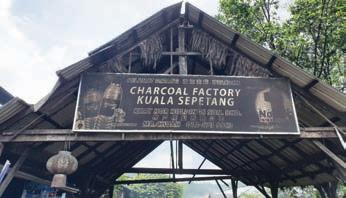
One of the early industries started during the Second War and which has survived till today is charcoal production at Khay Hor Holdings Sdn Bhd in Kuala Sepetang. Located 15km from Taiping, the factory produces the finest charcoal commonly known as black gold.
Founded by Chuah Khay Hor, the factory is operated today by Chuah Kow Aun. When a friend told me about the factory, I was intrigued and decided to make Kuala Sepetang my next destination.
On 2 November, 2018, I exited the North-South Highway at the Taiping toll gate and turned into a narrow trunk road leading to the charcoal factory. When I arrived, I saw a group of visitors listening attentively as Mr. Chuah explained the charcoal making process. I rushed over to join the crowd.
The factory is a traditional wooden structure with a zinc roof. Inside are dozens of large kilns. According to Mr. Chuah, producing charcoal from mangrove trees (Rhizophora apiculate) was introduced during the Japanese Occupation (1941-1945) by Mitsui Sumitomo.
The factory was built here because of its strategic location near Kapal Changkol River and the Matang mangrove forest. Mangrove trees are abundantly available and are easily transported by boat during high tide. Unlike inland trees of a similar size, the mangrove tree is heavy, so it is not economical to be transported over land. Normally, 30-year-old trees are selected and felled. To sustain the forest, replanting is mandatory for every tree harvested.
First, the trees are transported by boat to the factory where the bark is stripped and the trees cut into logs of uniform dimensions, 1.6m long and 5-7cm in diameter. Each log weighs about 20kg.



Inside each igloo-shaped kiln, approximately 1,500 logs are arranged in a vertical position on clay blocks which create gaps for heat to circulate. Once it is filled up, the kiln is sealed, leaving a small opening for the burning of fire wood. Stripped barks and felled undersize trees are also used to smoke the logs inside kiln to extract water. The heating or smoking process is done in two stages under different temperatures and time durations. Stage 1: 80-85 degrees Celsius for 10 days. Stage 2: 220-230 degrees Celsius for 14 days.
After the second stage, the logs are left for 8 days to cool naturally. In total, it takes 32 days to produce one batch of charcoal. The finished product is a fine grade, light and black charcoal. Mr. Chuah says 30-35 tons of logs will produce only 10 tons of fine charcoal.The remaining weight is that of water which is vaporised. The vaporised water is released through vent holes and condensed to make a balm which is said to be effective for repelling mosquitoes.
The kiln is made of clay bricks and plastered with clay instead of cement because clay has superior heat retaining property. Each kiln is 7m high, with a base diameter of about 9m. According to Mr. Chuah, all the kilns were destroyed when the Japanese lost the war. However, some locals who worked in the factories managed to gain sufficient skills to rebuild the kilns.
It was a stroke of good luck that during my visit, one kiln had been emptied and was awaiting the next batch of logs. I stepped inside the kiln which was lighted by a small electric bulb. To my surprise, the air inside was relatively fresh, probably due to the purifying effect of charcoal. The interior wall was spotlessly clean too despite the smoking of 1,500 logs. It was really quite amazing.
After exploring the factory for 2 hours, I left with a great sense of satisfaction. This simple production process has survived for over 7 decades to continue producing charcoal for domestic and foreign consumption. There is no doubt in my mind that charcoal production in Kuala Sepetang is a production heritage of the nation.
Kepada Semua Ahli,
Tarikh: 18 Mac 2019
2019
Berikut adalah senarai calon yang layak untuk menduduki Temuduga Profesional bagi tahun 2019.
Mengikut Undang-Undang Kecil IEM, Seksyen 3.8, nama-nama seperti tersenarai berikut diterbitkan sebagai calon-calon yang layak untuk menjadi Ahli Institusi, dengan syarat bahawa mereka lulus Temuduga Profesional tahun 2019.
Sekiranya terdapat Ahli Korporat yang mempunyai bantahan terhadap mana-mana calon yang didapati tidak sesuai untuk menduduki Temuduga Profesional, surat bantahan boleh dikemukakan kepada Setiausaha Kehormat, IEM. Surat bantahan hendaklah dikemukakan sebulan dari tarikh penerbitan dikeluarkan.
Ir. Mohd Khir bin Muhammad FIEM, PEng Setiausaha Kehormat, IEM (Sessi 2018/2019)
PERMOHONAN BARU
Nama Kelayakan
KEJURUTERAAN CIVIL
AHMAD AMRU BIN YUSOFF BE HONS (UTM) (CIVIL, 2006)
IZWAN SHAH BIN IBRAHIM BE HONS (UTM) (CIVIL, 2009)
MOHAMMAD SALI BIN YUSSOF BE HONS (UiTM) (CIVIL, 2011)
MOHAMMED IBNI BIN ABDUL SABUL BE HONS (UiTM) (CIVIL, 2007)
MOHD AFZAINIZAM BIN NOORDIN BE HONS (UTM) (CIVIL, 2003)
NOR FAEZAH BINTI ROZAINI BE HONS (UTM) (CIVIL, 2006)
KEJURUTERAAN MEKANIKAL
SEAH WOON BIN BE HONS (UTM) (MECHANICAL, 2009)
PERMOHONAN BARU / PERPINDAHAN MENJADI AHLI KORPORAT
Nama Kelayakan
KEJURUTERAAN CIVIL
AZMAN BIN TEH BE HONS (POLYTECHNIC OF CENTRAL LONDON) (CIVIL, 1987)
LAU HIN HUAT BE HONS (NOTTINGHAM TRENT)(CIVIL & STRUCTURAL, 2003)
PERPINDAHAN AHLI
No. Ahli Nama Kelayakan
KEJURUTERAAN AWAM
52310 AZHAR BIN AZMI BE HONS (UTM) (CIVIL, 2006) ME (UPM) (HIGHWAY & TRANSPORTATION, 2013)
27029 EFFA IRDA WATI BT SUPERMAN BE HONS (UiTM) (CIVIL, 2006)
94689 LOK MING SHANN ME HONS (NOTTINGHAM) (CIVIL, 2011)
50676 MOHD JAMRY BIN ABD JAWAS BE HONS (UKM) (CIVIL & STRUCTURE, 2006)
23345 MOHD SHAHNEEZAM BIN ABD RAHMAN BE HONS (UiTM) (CIVIL, 2005)
33233 ZAHID SUFFIAN BIN ZAINALABIDIN BE HONS (UiTM) (CIVIL, 2009)
KEJURUTERAAN MEKANIKAL
88875 TAN SIEW AUN BE HONS (USM) (MECHANICAL, 2007) MSc (USM) (MECHANICAL, 2018)
100711 TEO HAN FUI BE HONS (UTM) (MECHANICAL, 2005)
KEJURUTERAAN PEMBUATAN
54249 MEERA A/P VAJAINDRAN BE HONS (UniMAP) (MANUFACTURING, 2009) ME (UPM) (MANUFACTURING SYSTEMS, 2011)
KEJURUTERAAN PETROLEUM
81853 MOHD RAZMI ZIQRI BIN AHMAD SHUKRI BE HONS (UTP) (PETROLEUM, 2012) MSc (UTP) (PETROLEUM, 2018)
UPCOMING ANNUAL GENERAL MEETINGS – TECHNICAL DIVISION































































Date : 30 April 2019 (Tuesday)
Time : 9.00 a.m. to 1.00 p.m.
Venue : Wisma IEM
Approved CPD : 3.0



Half Day Seminar on “Discover & Develop the True Characters Beyond the Personalities”
























Speaker : First Admiral Dato’ Ir. Hj. Ahmad Murad bin Hj. Omar (Rtd) & Mr. Swarup Roy 1-day Course on “Optimum
Date : 04 May 2019 (Saturday)
Venue : Wisma IEM
Approved CPD : Applying
Speaker : Ir. Hor Kok Luen & Ir. Wendy Ooi Mong Lee Ching

Awareness Talk & PI Workshop on Enhanced PI Process
Date : 25 May 2019 (Saturday)
Time : 9.00 a.m. to 1.00 p.m.
Venue : Wisma IEM
Approved CPD : 3.0
Speaker : Ir. Chen Harn Shean
CONTINUATION LIST FROM MARCH JURUTERA 2019 ISSUE
PERMOHONAN MENJADI AHLI SISWAZAH
No. Ahli Nama Kelayakan
KEJURUTERAAN MEKANIKAL
100678 GOH CHUA MENG
101021 DR. SITI NURHAIDA KHALIL
101018 AHMAD ANAS BIN ABDUL AZIZ
B.E.HONS.(UNISEL) (MECHANICAL, 2010)
M.Sc.(UTP)(ELECTRONICS SYSTEMS, 2014)
B.E.HONS.(UNITEN) (MECHANICAL, 2001)
M.Sc.(LOUGHBOROUGH UNI.) (ENGINEERING DESIGN, 2005)
PhD.(LOUGHBOROUGH UNI.) (2012)
B.E.HONS.(UNITEN) (MECHANICAL, 2012) 99518 MUHAMMAD HASIF BIN JAMIL
KEJURUTERAAN MEKATRONIK
100689 MUHAMMAD AMIRUL BIN JELANI
99532 MOHAMAD HAFIZ ALIMIN ABDUL MALEK
101057 LIM YIK LOK, TERRENCE
B.E.(CHUNGNAM NATIONAL UNIVERSITY)(MECHATRONICS, 2017)
B.E.HONS.(IIUM) (MECHATRONICS, 2015)
B.E.HONS.(SWINBURNE) (ROBOTICS & MECHATRONICS, 2009)
Note: Continuation of the Transfer Graduate, Graduate, Incorporated, Affiliate and Associate would be published in May 2019. For the list of approved “ADMISSION TO THE GRADE OF STUDENT”, please refer to IEM web portal at http://www.myiem.org.my.
26
27
28
29
30
31
32
33
BIN ABD AZIZ
34 08432 IR. LAW KEN CHOONG
35 13870 IR. ONG EE CHOONG
B.E.HONS.(UNITEN) (MECHANICAL, 2014)
B.E.HONS.(UNITEN) (MECHANICAL, 2013) 101037 SHUREENDRAN MUNIANDY RAJAN
101013 THINESH SUPPAIAH B.E.HONS.(UNITEN) (MECHANICAL, 2014)
100789 MOHD FADHLI ZIL IKHRAM BIN CHE ZAHARI
B.E.HONS.(UNITEN) (MECHANICAL, 2015)
100672 AHMAD LUTFI BIN YAACOB B.E.HONS.(UNITEN) (MECHANICAL, 2015)
100874 HAFIZUDDIN MOHD LOWHIM B.E.HONS.(UNITEN) (MECHANICAL, 2016)
99531 PRAMILA NAIR PREBAKARRAN B.E.HONS.(UNITEN) (MECHANICAL, 2017)
100727 PRAVIIN JAYAKUMAR B.E.HONS.(UNITEN) (MECHANICAL, 2017)
100891 CHEN SHIANG YIH B.E.HONS.(UPM)(MECHANICAL, 1997)
100675 NAZRUN NABILL BIN AZLAN SHAH B.E.HONS.(UPNM) (MECHANICAL, 2015)
100880 MUHAMMAD KHAZIQ BIN SAZALI B.E.HONS.(UPNM) (MECHANICAL, 2017)
100799 NANDHAKUMAR A/L NARAYANASAMY B.E.HONS.(USM)(MECHANICAL, 2002)
100725 ABDUL MUN'IM BIN ABDUL RAHMAN
B.E.HONS.(USM)(MECHANICAL, 2010)
100916 LIM HOON HOON, DENISE B.E.HONS.(UTAR SG LONG) (MECHANICAL, 2018)
100914 LIM YUE HENG B.E.HONS.(UTAR SG LONG) (MECHANICAL, 2018)
100912 ONG JING YUAN B.E.HONS.(UTAR SG LONG) (MECHANICAL, 2018)
100906 TEOH KAI JET B.E.HONS.(UTAR SG LONG) (MECHANICAL, 2018)
101042 CHONG CHI LIANG B.E.HONS.(UTAR) (MECHANICAL, 2011)
100807 LIM JIN HOW B.E.HONS.(UTAR) (MECHANICAL, 2018)
100794 JOE MCLAREN ANAK TOMMY B.E.HONS.(UTeM) (MECHANICAL-STRUCTURE & MATERIAL, 2015)
101034 NEAL EDDLE LADUING B.E.HONS.(UTHM) (MECHANICAL, 2008)
100812 AHMAD AFIF BIN MOHAMAD ZEN B.E.HONS.(UTHM) (MECHANICAL, 2010)
100875 AFIF HAFIZ BIN MOHAMAD B.E.HONS.(UTHM) (MECHANICAL, 2011)
100823 CHAN CHOON KIT B.E.HONS.(UTHM) (MECHANICAL, 2011)
101062 CHAI CHUAN HAO B.E.HONS.(UTM)(MECHANICAL, 2012)
100889 ABDUL HALIM BIN MOHD SALLEH
B.E.HONS.(UTM)(MECHANICAL, 2016)
100892 DR. NURUL HUDA BINTI AHMAD B.E.HONS.(UTM)(MECHANICALAERONAUTICS, 2007) M.E.(UTM)(MECHANICAL, 2011) Eng.D.(TOKYO INST. OF TECH.)(INTERNATIONAL DEVELOPMENT ENGINEERING, 2016)
101016 JAMILAH BINTI MOHD RAFI
100883 MOHD ARIF BIN ABDUL LATIP
101047 MOHD FIRDAUS BIN SAID
B.E.HONS.(UTM)(MECHANICALAERONAUTICS, 2015)
B.E.HONS.(UTM)(MECHANICALAUTOMOTIVE, 2008)
Pengumuman yang ke-126
SENARAI PENDERMA KEPADA WISMA DANA BANGUNAN IEM
Institusi mengucapkan terima kasih kepada semua yang telah memberikan sumbangan kepada tabung Bangunan Wisma IEM. Ahli-ahli IEM dan pembaca yang ingin memberikan sumbangan boleh berbuat demikian dengan memuat turun borang di laman web IEM http://www.iem. org.my atau menghubungi secretariat di +603-7968 4001/5518 untuk maklumat lanjut. Senarai penyumbang untuk bulan Februari 2019 adalah seperti jadual di bawah:
36 16436 SDR. SHA'HIDAN BIN MAT HASSAN
37 02320 IR. ONG GEOK SOO
38 04152 IR. LEONG KEE CHAN
39 06512 IR. DR. FARID NASIR BIN ANI
40 45798 MR. SUBRAMANIAM A/L ANPUALAGAN
41 19258 MR. WONG YANN JEH, STANLEY
42 18228 MR. AMIR HAMZAH BIN MUSTAPHA
43 16358 MR. PAISMANATHAN A/L GOVINDASAMY
44 12626 IR. LEONG MUN YEAN
45 86590 MR. LEE CHEE KIEN
46 54117 IR. ALI KAMAL SABRI BIN ABDUL AZIZ
47 06918 IR. PHAN CHEE SHONG
48 12874 IR. KHAIRULEZUAN BIN HARUN
49 07231 MR. SAM MAN KEONG
50 11719 MR. DONALD MACPHAIL MCLEOD
51 69488 MR. SURIAN BIN RASOL
52 00437 IR. TAN KOK SWEE
53 15881 IR. KUMARI NALINI A/P P. SUBRAMANIAM
54 02966 IR. ONG KIM TOO
55 08292 IR. PHANG KWAI SANG
56 15340 IR. MOHAMAD RAFIUDDIN BIN SAID
57 34388 MS. PHOEBE RAJENDRAN
58 12755 IR. SYED ABU HANIFAH BIN SYED ALWI
59 25614 MS. NUR SHAZWANI BINTI MUHAMMAD
60 01516 IR. LIM KIM HUI
61 24799 MR. FADZIL HARMAN SHAH BIN MUHAMAD JOHAR
62 00818 IR. LOH CHOW KHUAN
63 12279 IR. CHEW AI BENG
64 15850 MR. JAWHARDEEN BIN HAJI ABDUL KADER
65 08672 IR. LIM KONG JOO
66 01161 IR. TEE KIAN CHENG
67 17679 IR. CHOY WENG WAH
68 04351 IR. NGION ENG KENG
69 08897 IR. GAN KIN CHOON
B.E.HONS.(UTP)(MECHANICAL, 2014)
B.E.HONS.(UTM)(MECHANICALMARINE TECH., 2002) 101065 MOHAMMAD FARHAN BIN ZAMMERI
100684 WONG YEW BONG, JONATHAN
B.Sc.HONS.(QUEEN'S UNI.)(MECHANICAL, 2015)
M.App.Sc.(QUEEN'S UNI.)(MECHANICAL & MANUFACTURING, 2017)
99535 JONATHAN YEK LI ZIA M.E.HONS.(THE UNI. OF BATH) (MECHANICAL & ELECTRICAL, 2014)
100886 LEE CHEONG YOONG M.E.HONS.(THE UNI. OF NOTTNGHAM)(MECHANICAL, 2014)
100726 FOUAD ABDUL RAHIM MOKTI
M.E.HONS.(UCL)(MECHANICAL, 2015)
70 13492 IR. PAY GEET KOM
71 06016 IR. MOHD ELIAS BIN BURAN
72 09646 IR. CHAI SIEW KEY
73 08158 MR. MAT NAWI BIN MOHAMAD
74 22909 IR. LAU WEN ONG
75 26970 MR. S. VEERAKUMAR A/L S. SUBRAMANIAM
76 03053 IR. AWANGKU HIDUP BIN AWANGKU HOSAIN
Explore our full set of Professional and Integrated PUBLISHING MANAGEMENT SERVICES:
» Project Management
» Crea�ve Management
» Ad Space Management
» Mailing Management
» Print Management
• Annual Reports
• Booklets • Brochures
• Bun�ngs • Business Cards
• CD / DVD Replica�ons
• Calendars • Cards & Invita�ons
• Cer�ficates • Custom Prin�ngs
• Envelopes • Folders
• NCR Bill Books • Notepads
• Leaflets • Le�erheads
• Paper Bags • Posters
• S�ckers • Others









































Yes! I would like to be a subscriber of The Institution of Engineers, Malaysia’s publications
Name: _________________________________________________________________________________________________________
Mailing Address: _________________________________________________________________________________________________
Country: ________________________
Company/Institution: ______________________________________________________________________________________________
Title: ____________________________________________________________________________________________________
Telephone No: _________________________ Fax: _________________________ Email: _________________________________
New Subscriber Renewal
Please commence my subscription from: _________________________(month/year) Signature: _______________________________
To start your subscription of IEM’s publications, complete this form and mail it back to the address below. For faster processing, fax it to: +603 7493 1047. Thank you.
What is your primary job title?
Corporate Management (including chairman, president, proprietor, partner, director, vice president, general manager, division manager, import/export manager, other corporate title)
Management (including project/contract/equipment/service/transport district manager, clerk of works, other technical or operating manager)
Engineering/Design (including chief engineer, chief designer, civil/ highway/mechanical/planning engineer, other engineering/design title)
Buying/Purchasing (including chief buyer, buyer, purchasing officer, other buying/purchasing title)
Titles allied to the field (architect, consultant, surveyor, research and development professor, lecturer, supervisor, superintendent, inspector or other allied title)
Others (please specify) ____________________________
What type of organisation do you work in? (Tick one box only)
Contractor
Sub-contractor specialist
Design and build contractor
Consulting engineering/architectural/quantity surveying practice
Mining/quarrying/aggregate production company
Petroleum producer
International/national authorities
National/regional/local government
Public utilities (electricity, gas, water, deck and harbour, other)
Manufacturer
Distributor/importer/agent
Construction department of large industrial/Commercial concern
Association/education establishment/research
Construction equipment hire/rental company
Project/construction management consultancy
Others (please specify) _______________________________
What are the main activities of your organisation? (Tick all that apply)
Constructions of:
Roads/bridges

Manufacturer of:
Construction equipment
Dams/reservoirs/irrigation Cement
Harbours/offshore structures Other construction materials
Foundations/tunnels Distribution Pipelines/refineries Construction equipment
Structures/steel work
Construction materials
Building (commercial, industrial) Hire/rental of construction equipment
Housing Design
Construction management Earth-moving/open cast mining
Deep mining Aggregate production
Others (Please specify) _________________________________________
Rate (Please tick)
RM360.00 - 12 issues of JURUTERA
RM84.00 - 2 issues IEM Journal (Half-yearly)
Terms and Conditions:
1) The subscription is to be prepaid.
2) Please make cheque payable to Dimension Publishing Sdn. Bhd.
3) Subscriptions are not refundable.
4) Magazine/s will be sent to the mailing address given.
5) Students are entitled for a 20% discount from the above subscription rate.
6) Students must submit a photocopy of the student identification card together with the payment.
7) The above rate is inclusive of delivery charges and applicable in Malaysia only.
8) Additional delivery charges will apply to overseas subscribers.
For subscription enquiries, please contact +603-7493 1049 or email to info@dimensionpublishing.com






